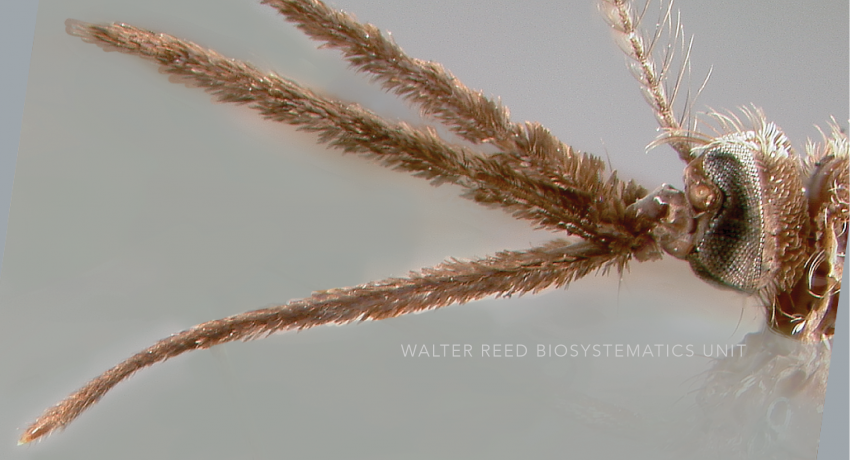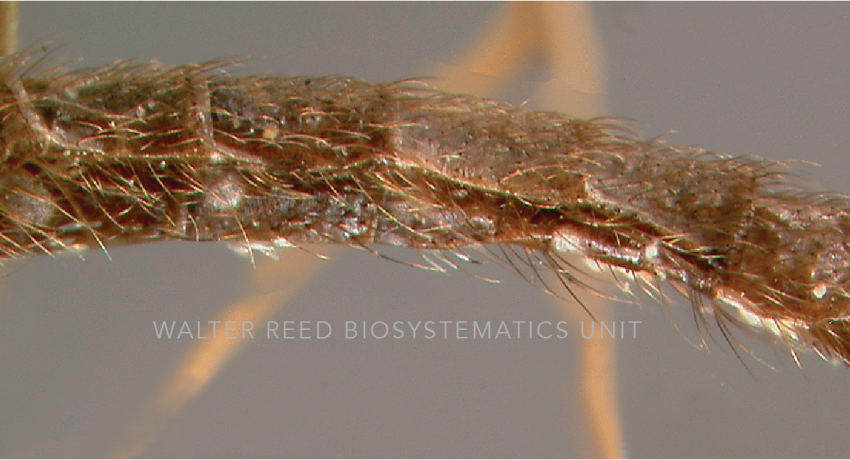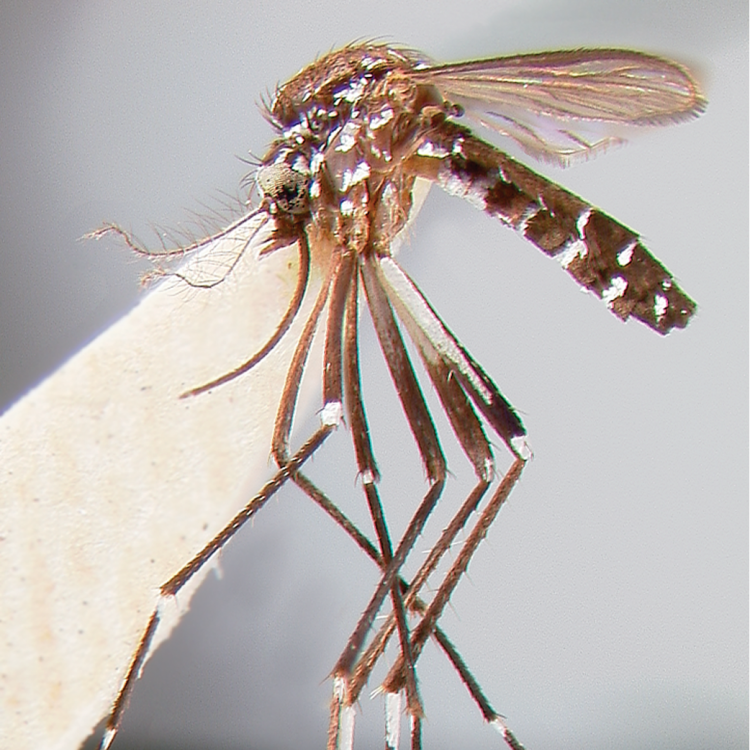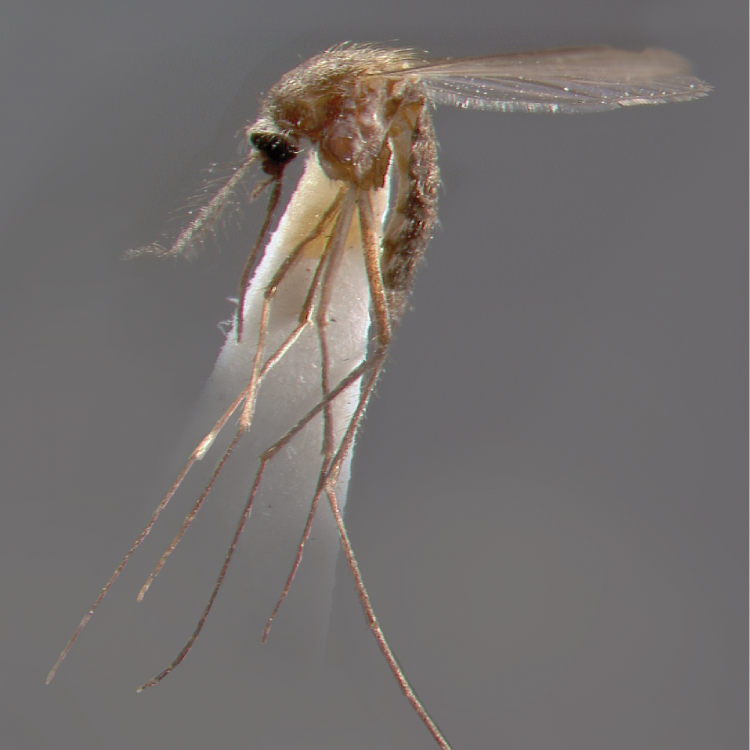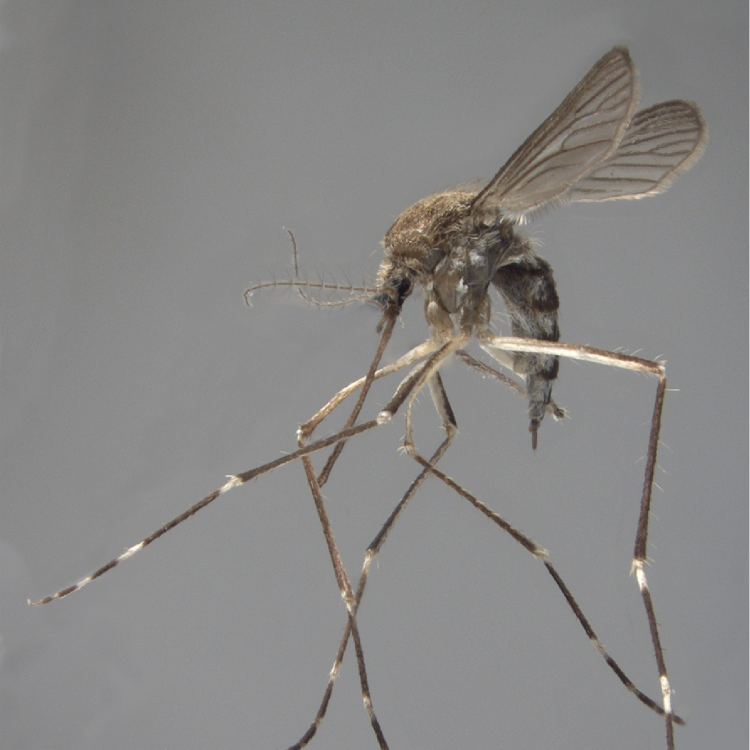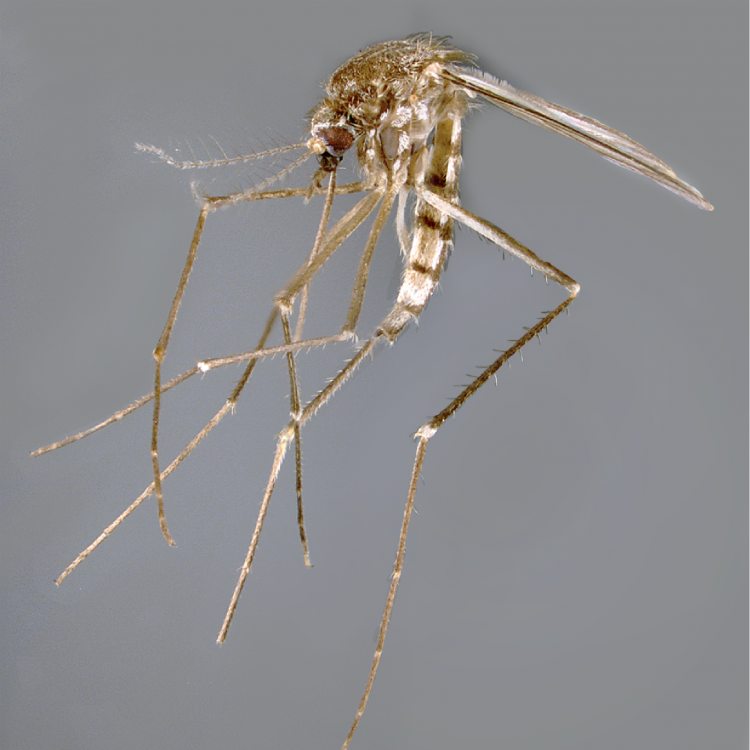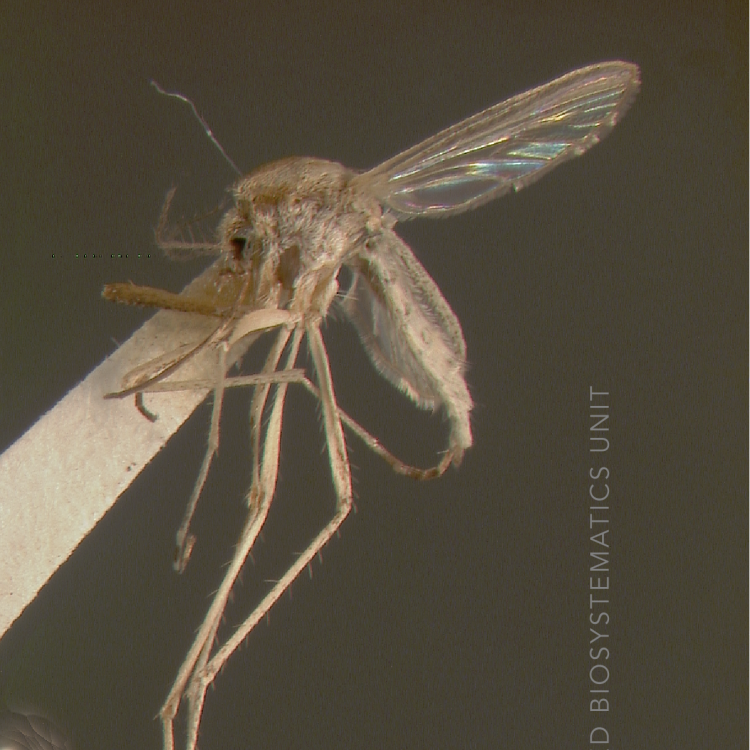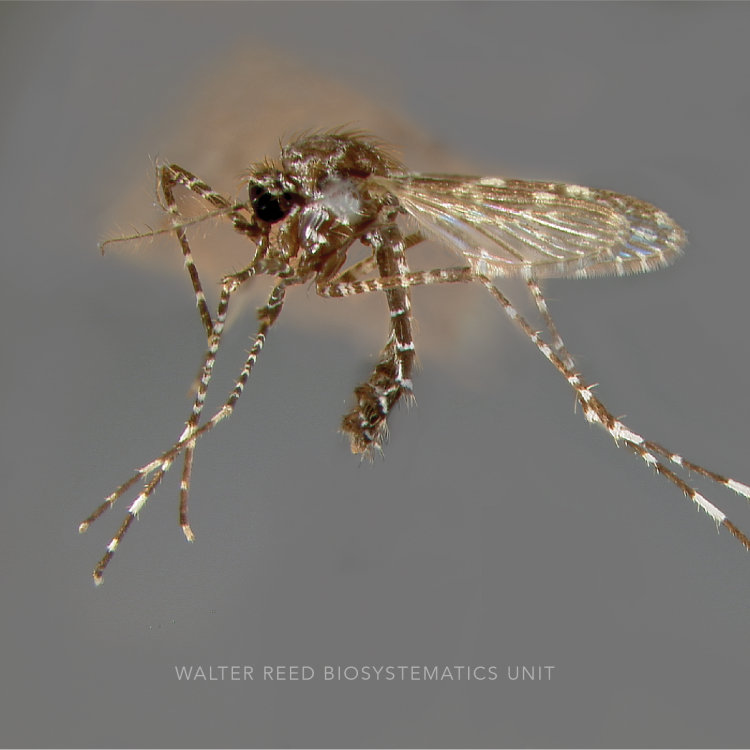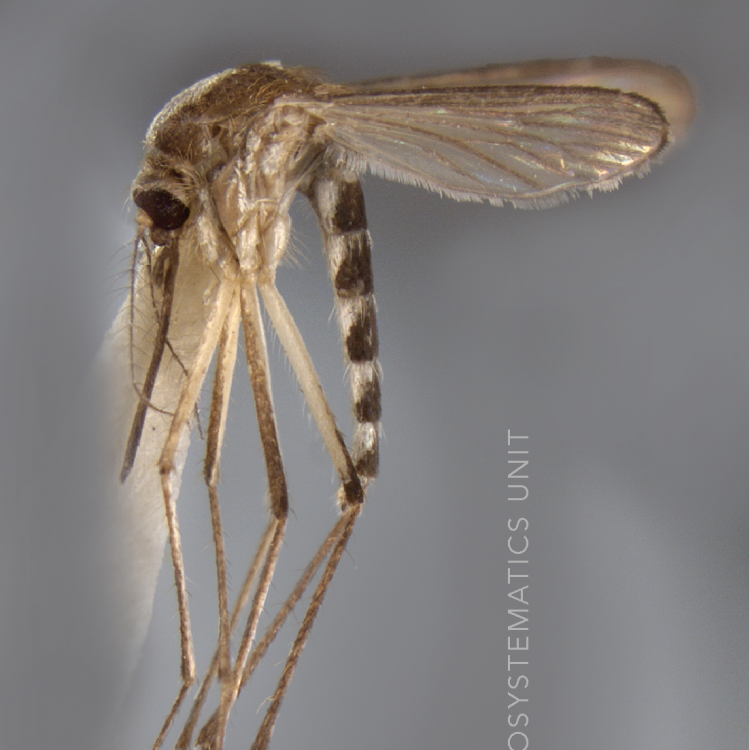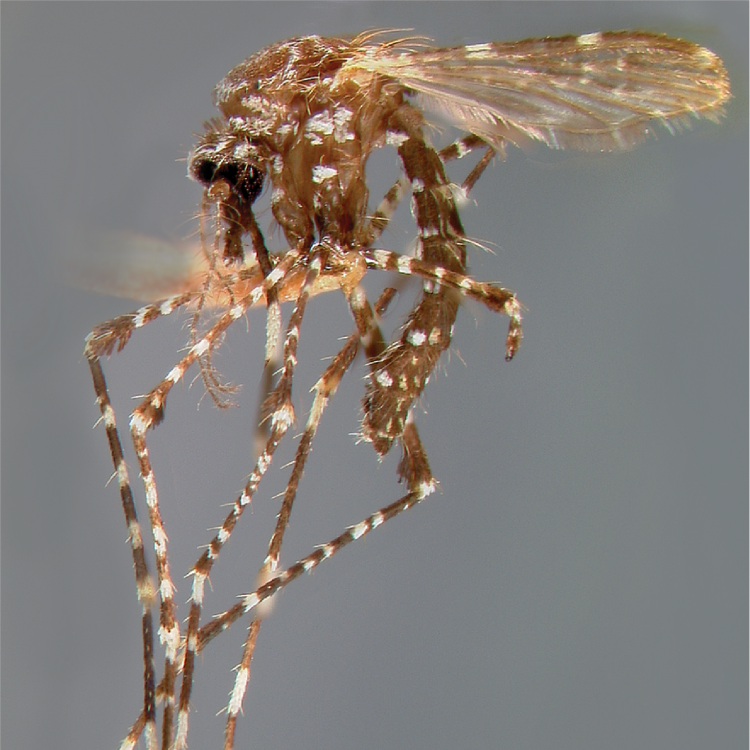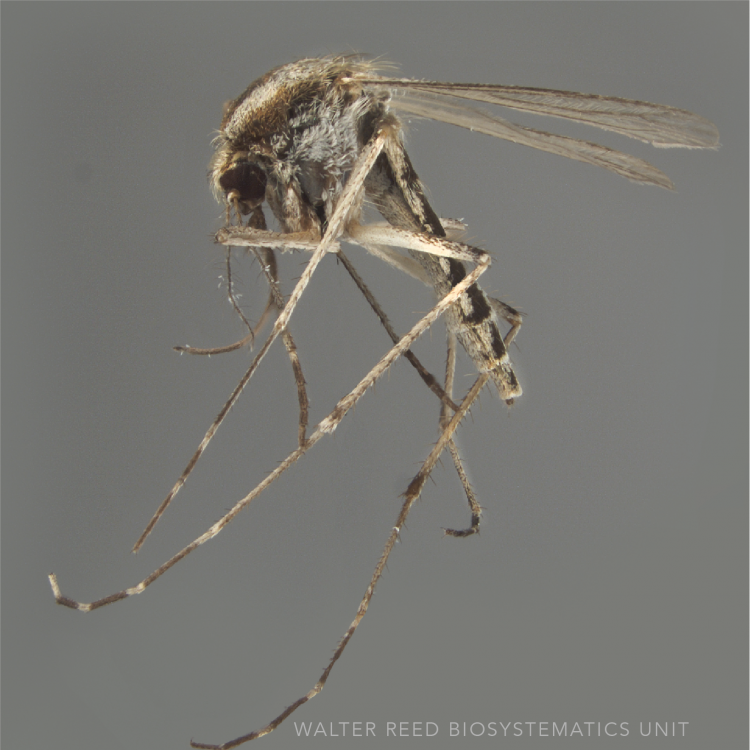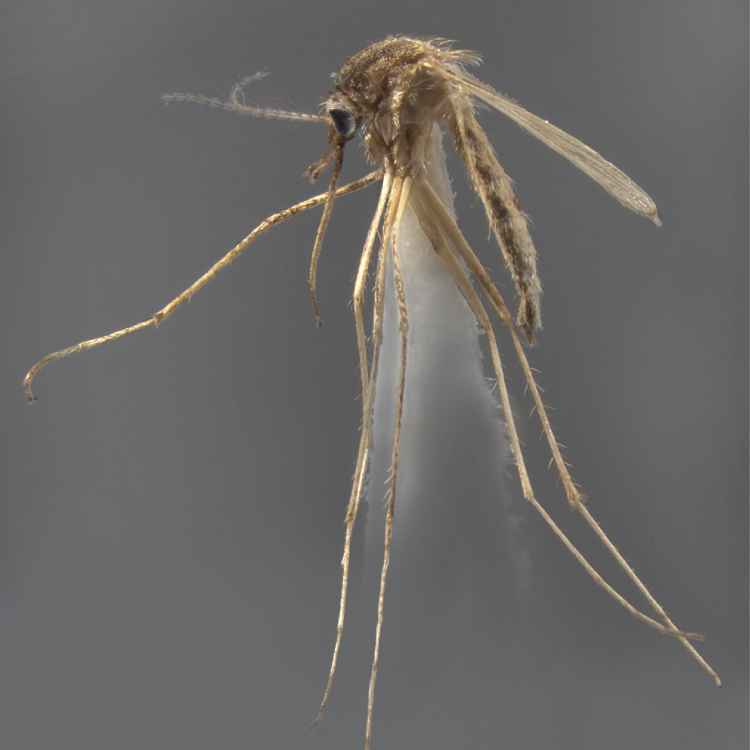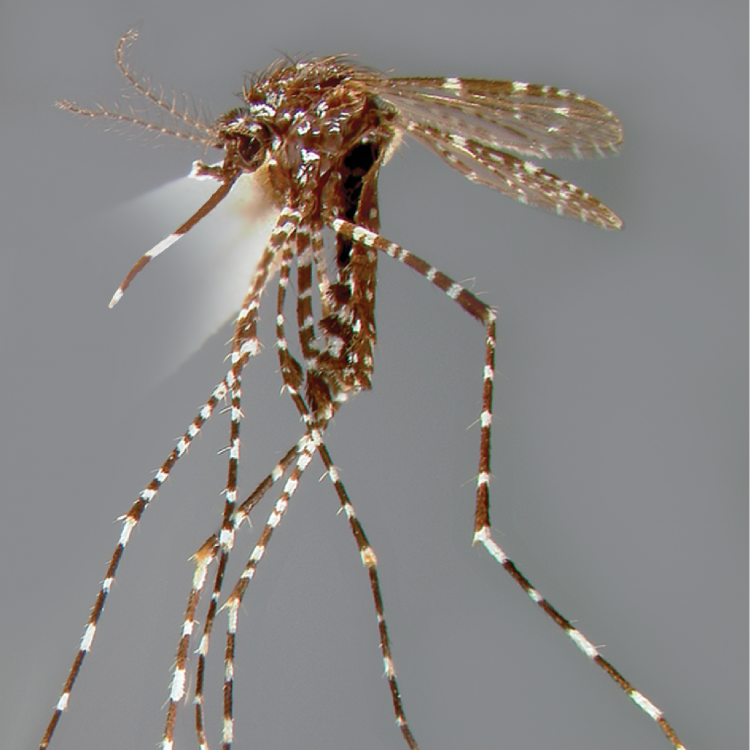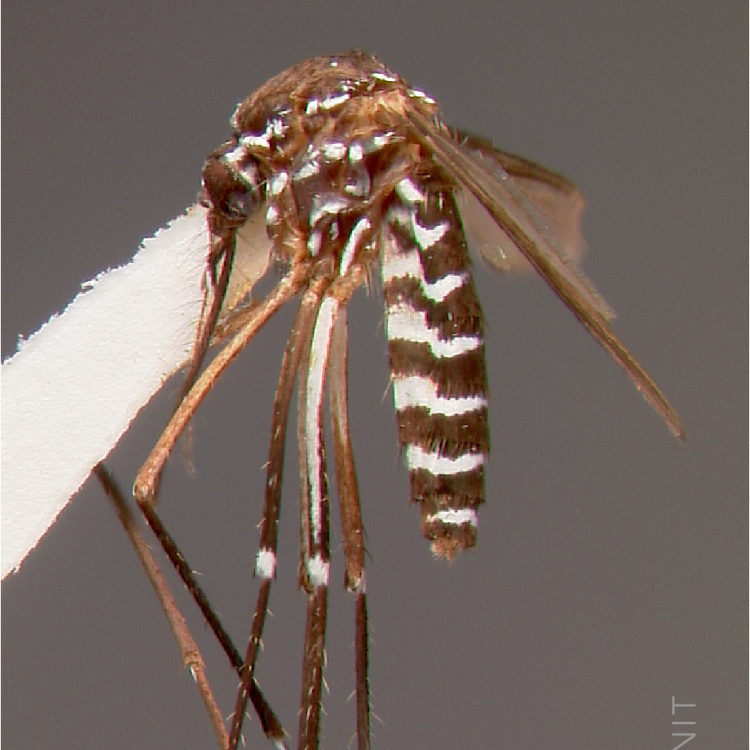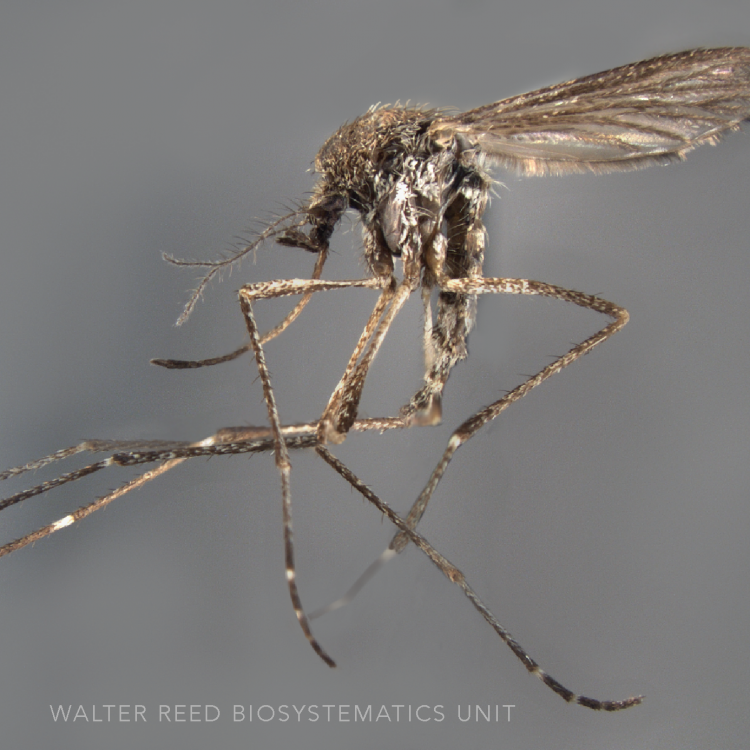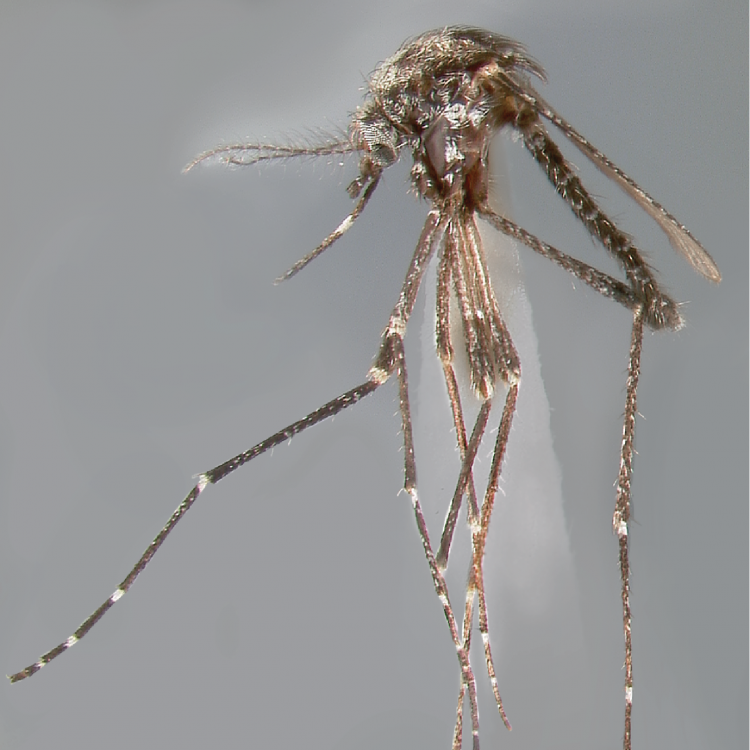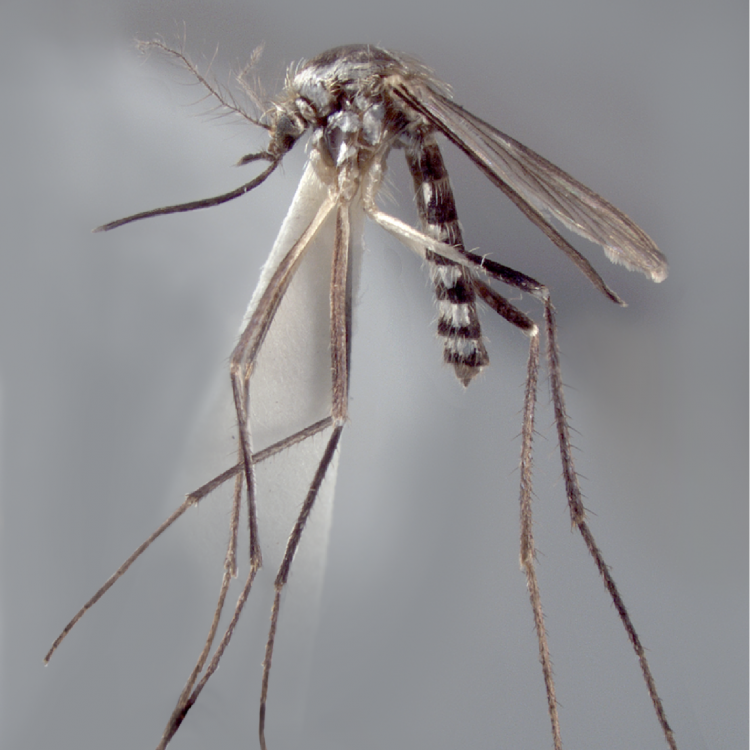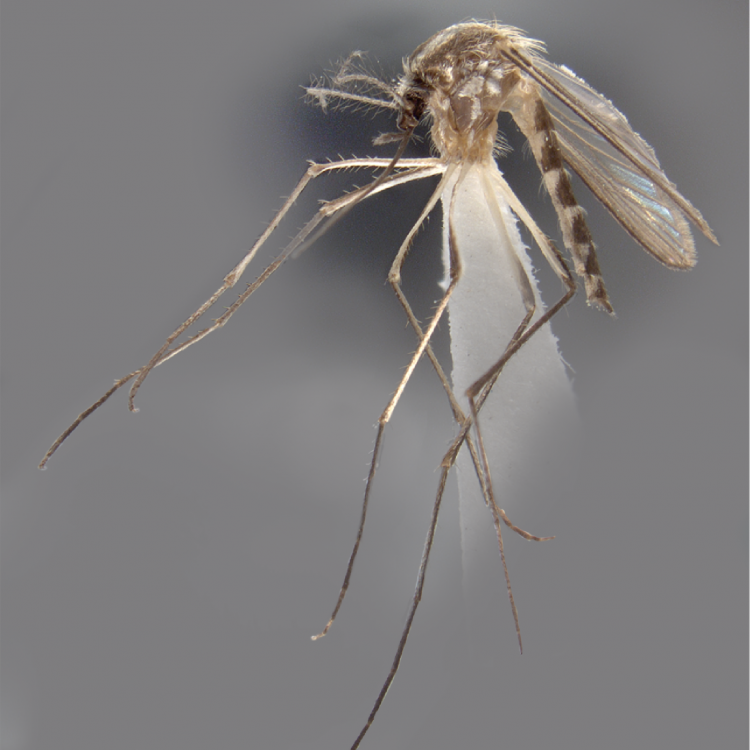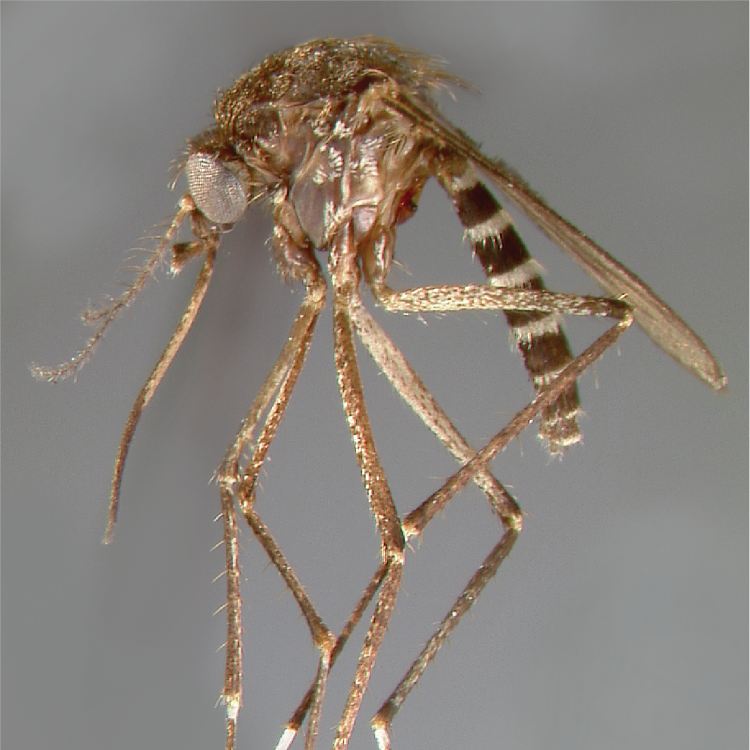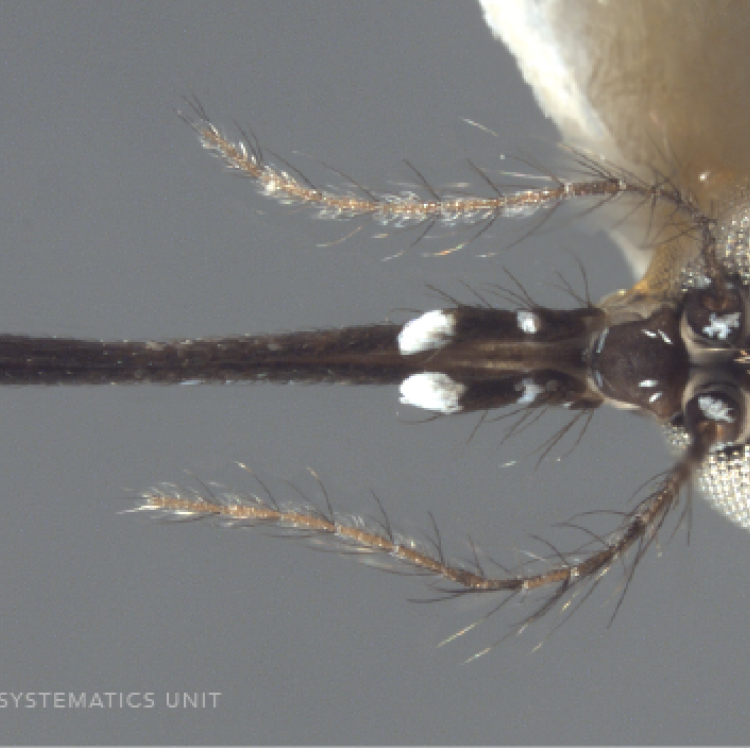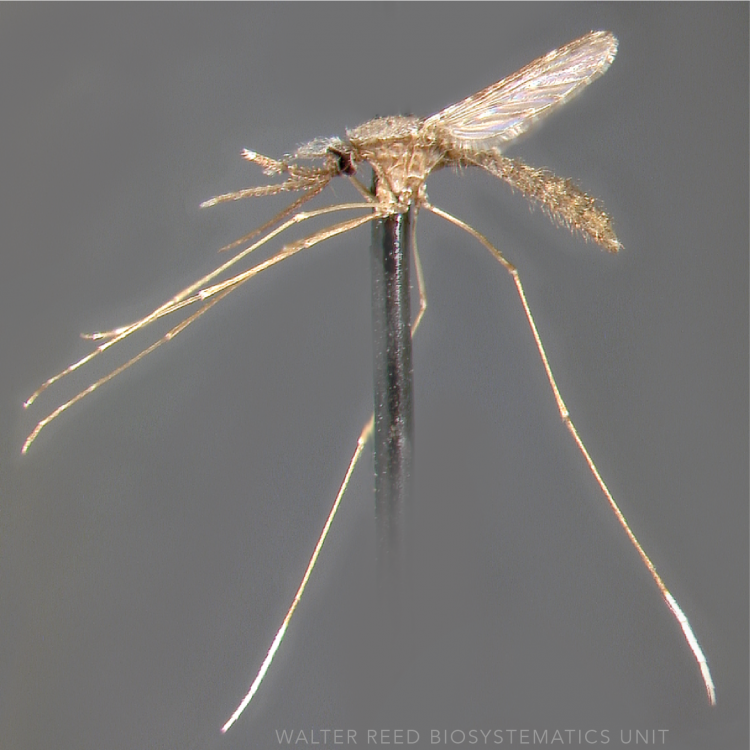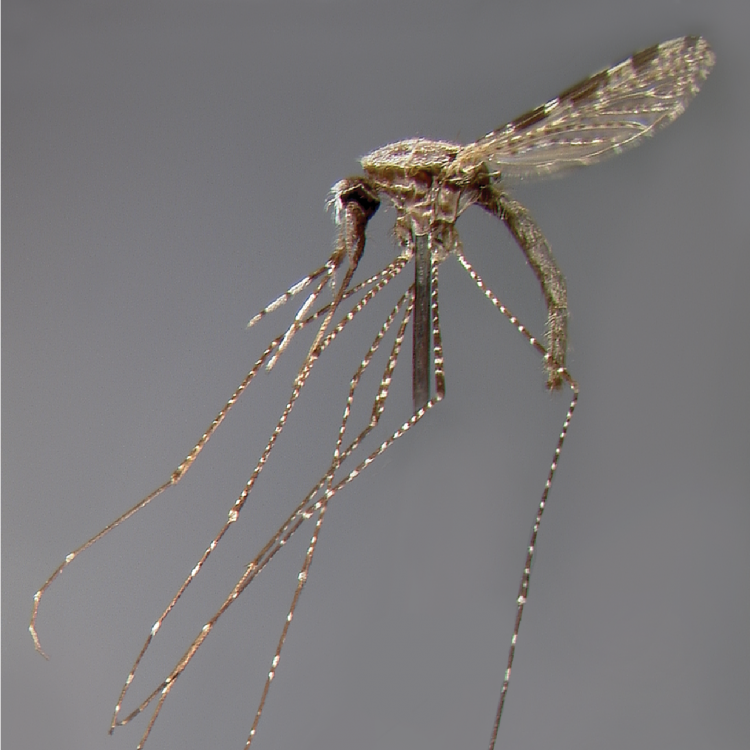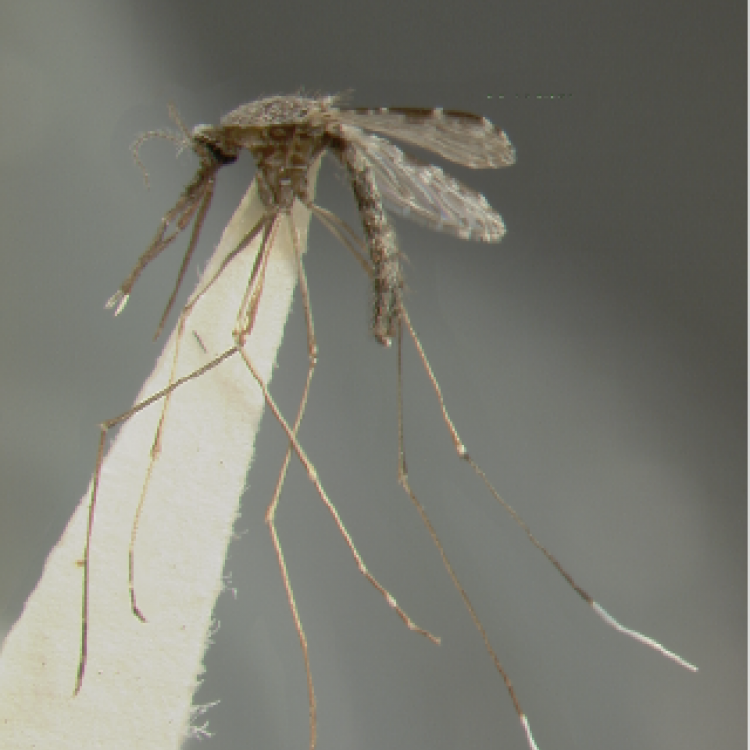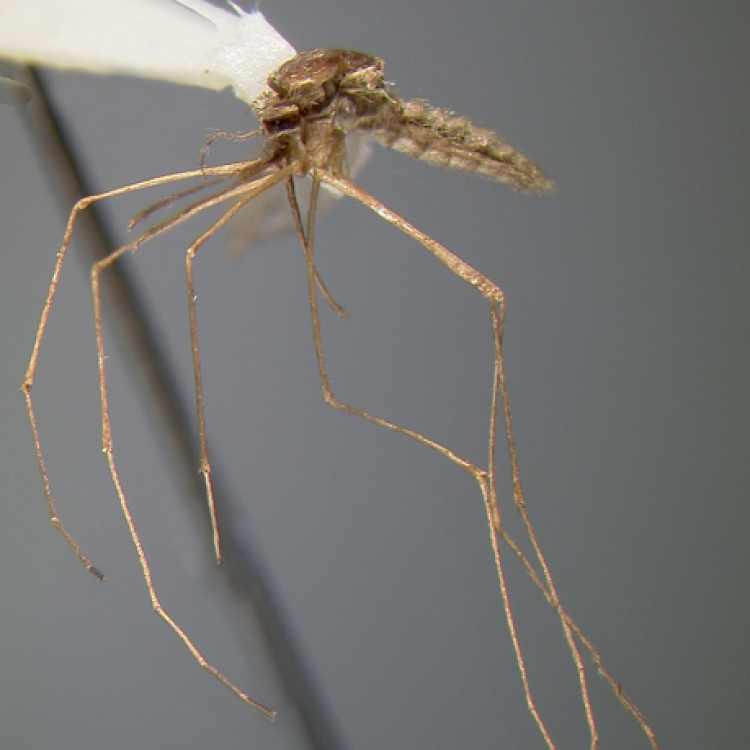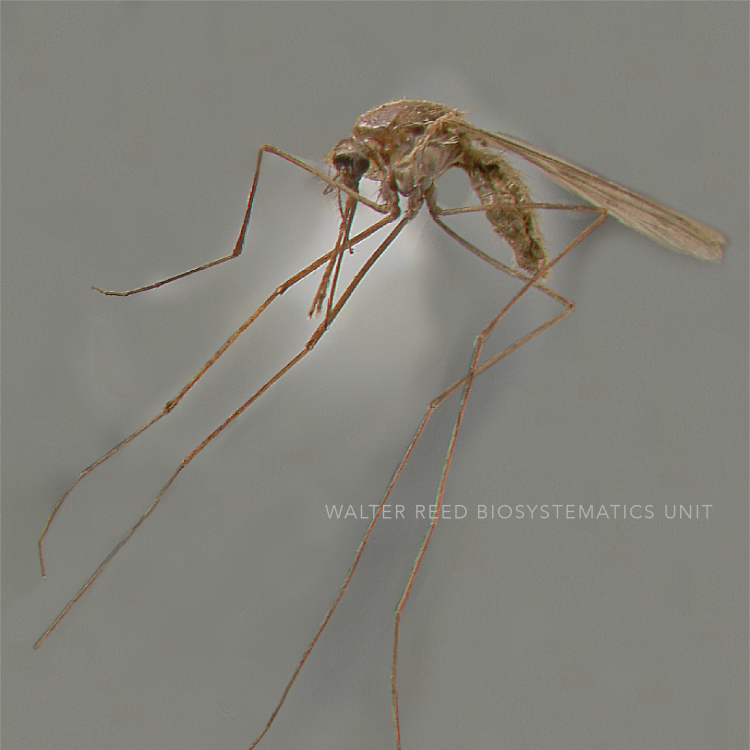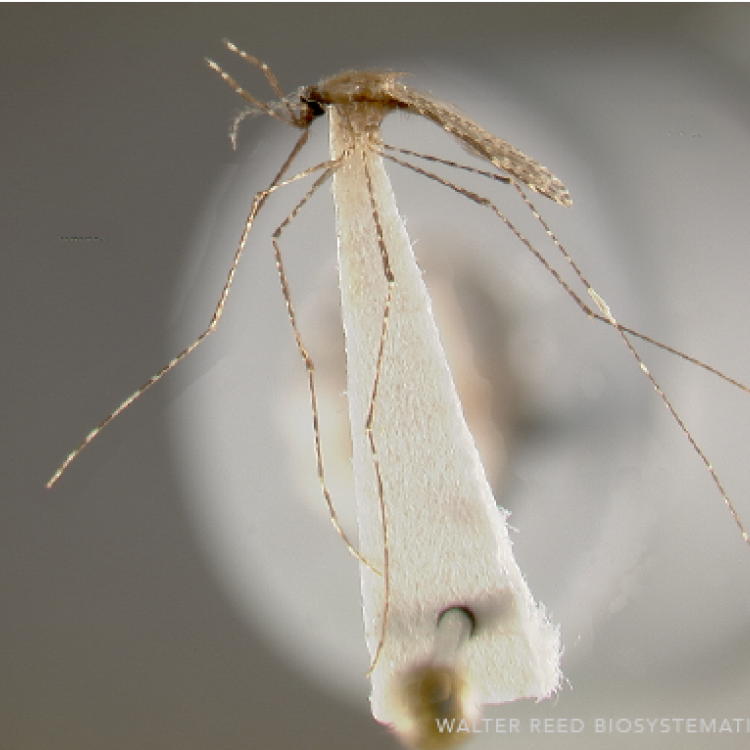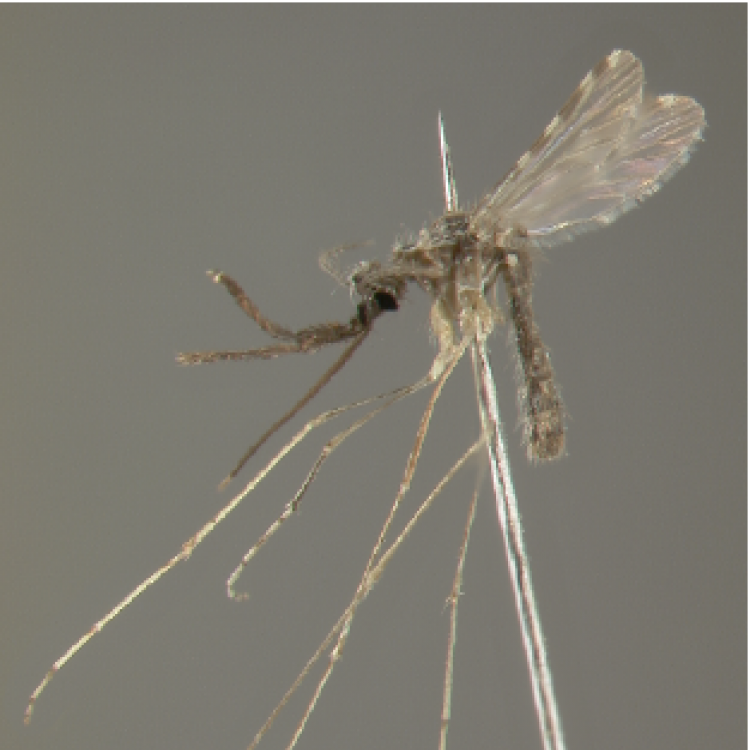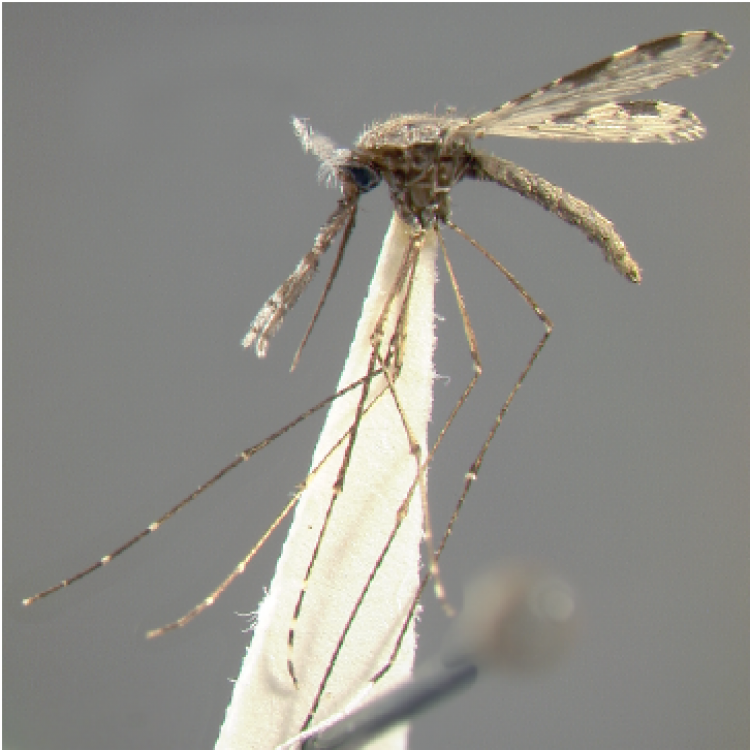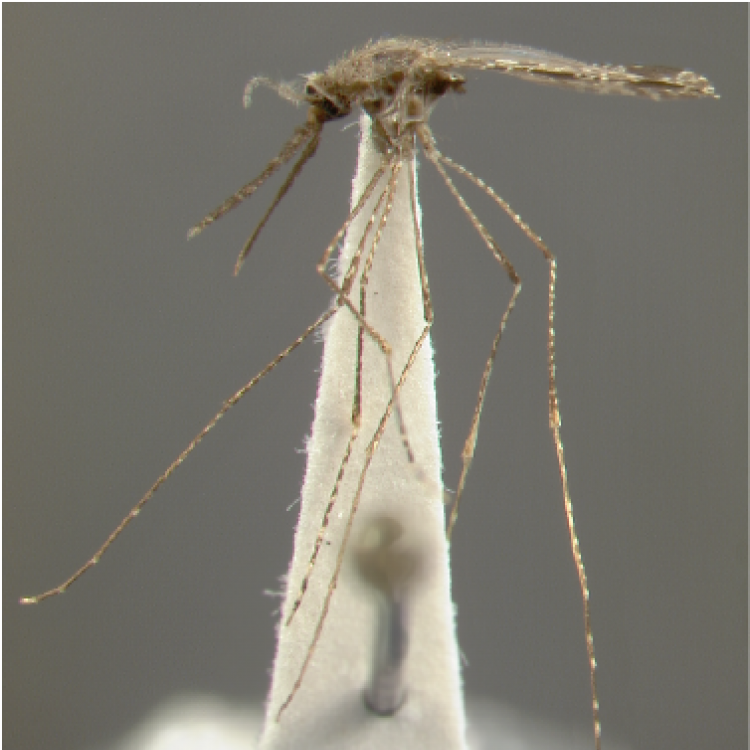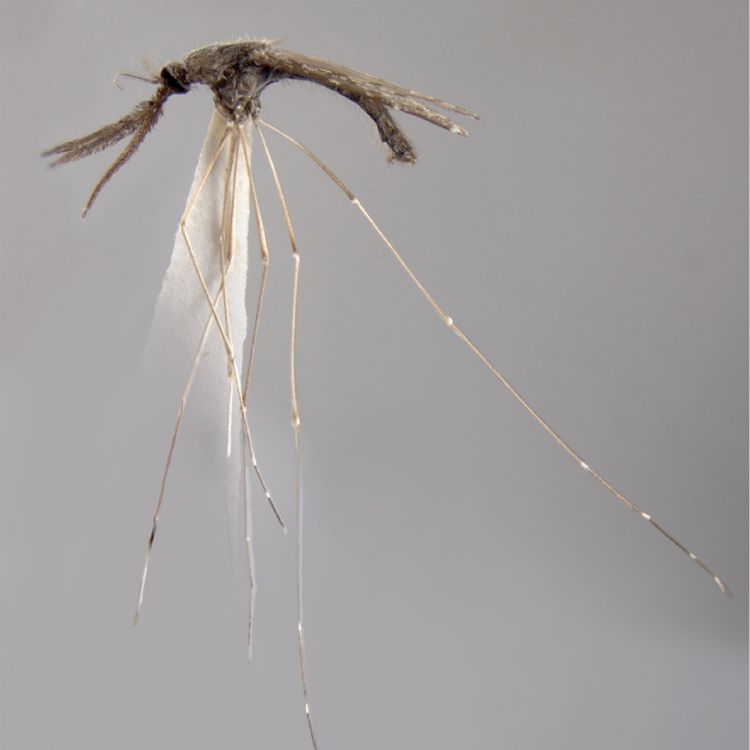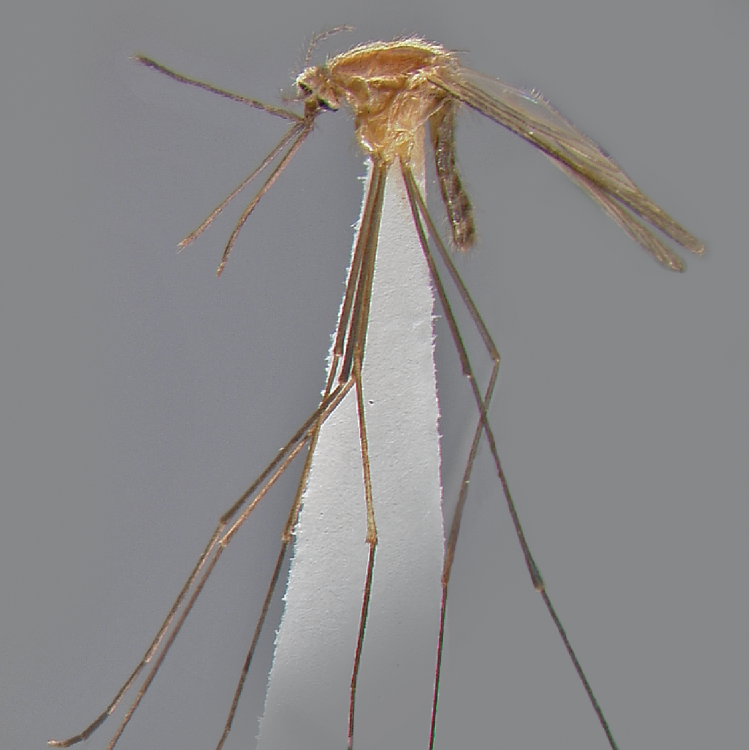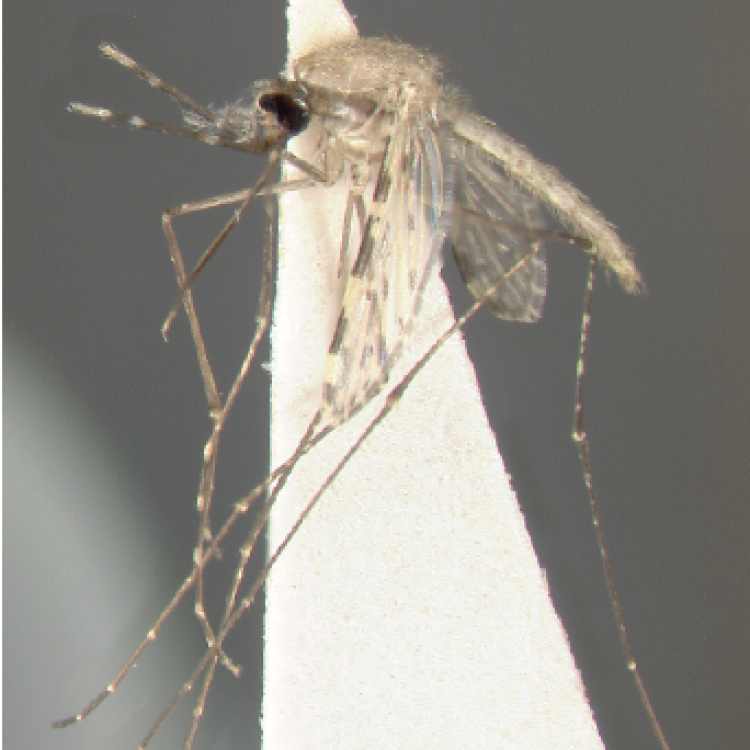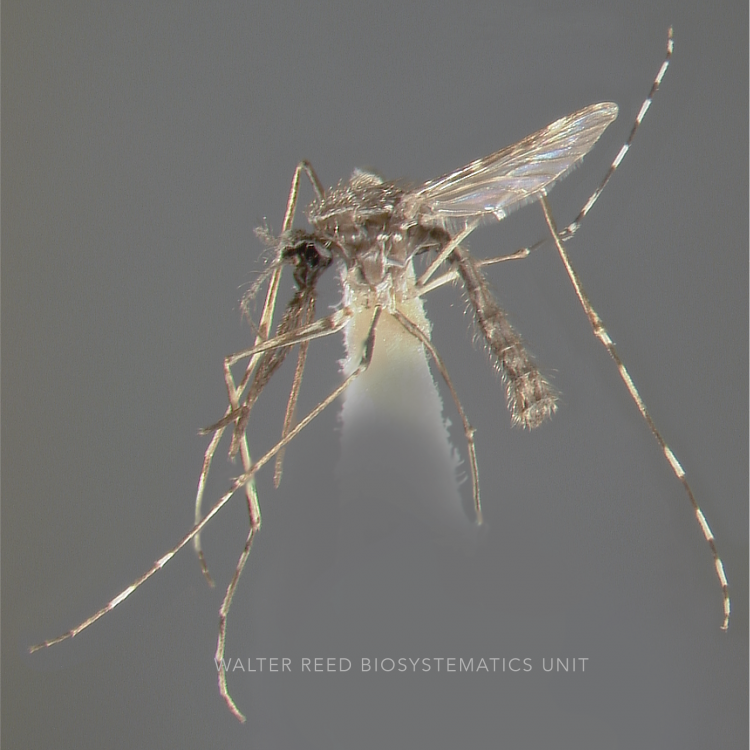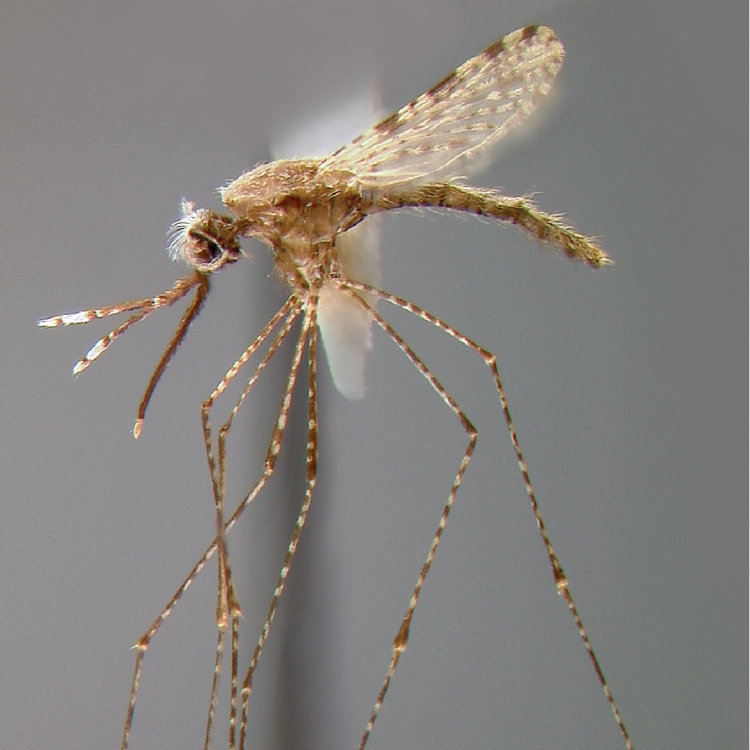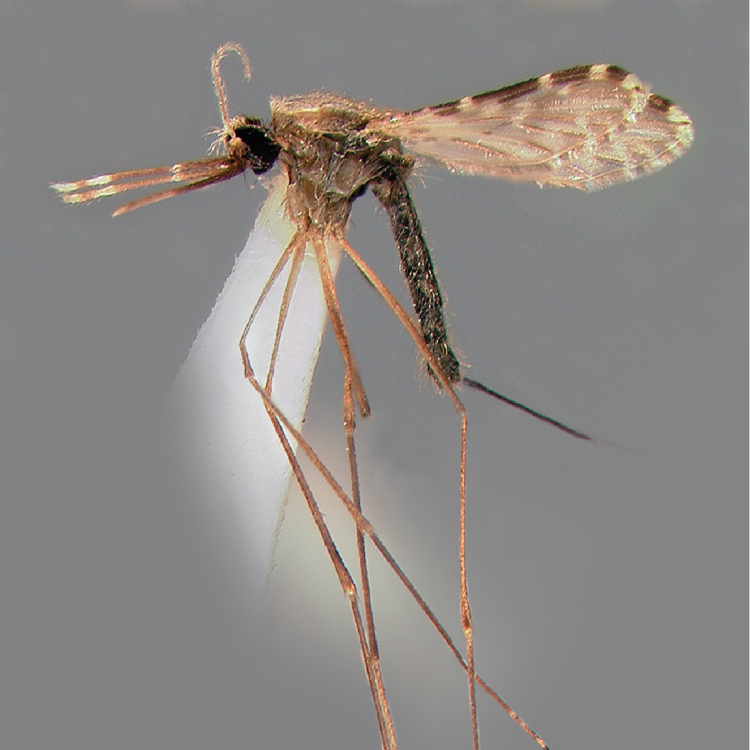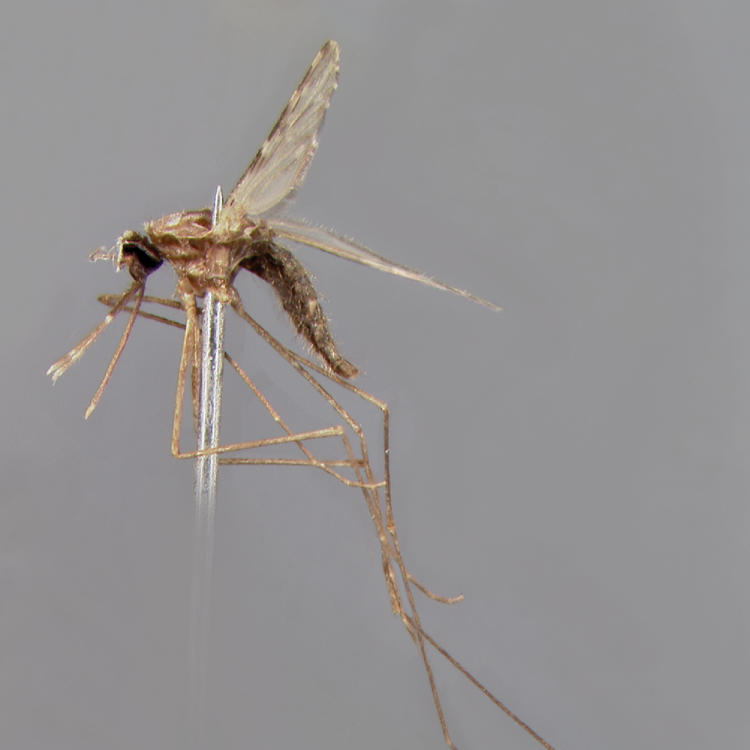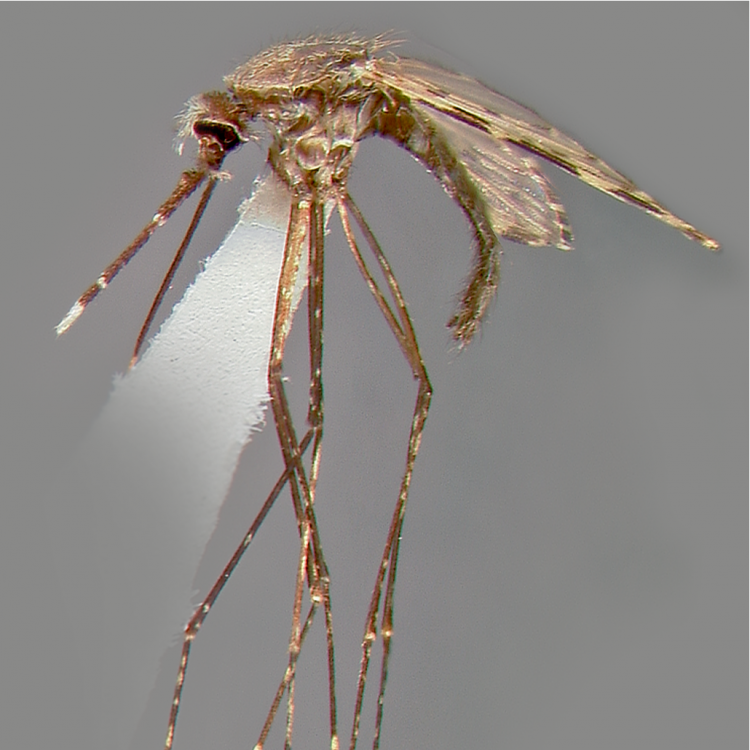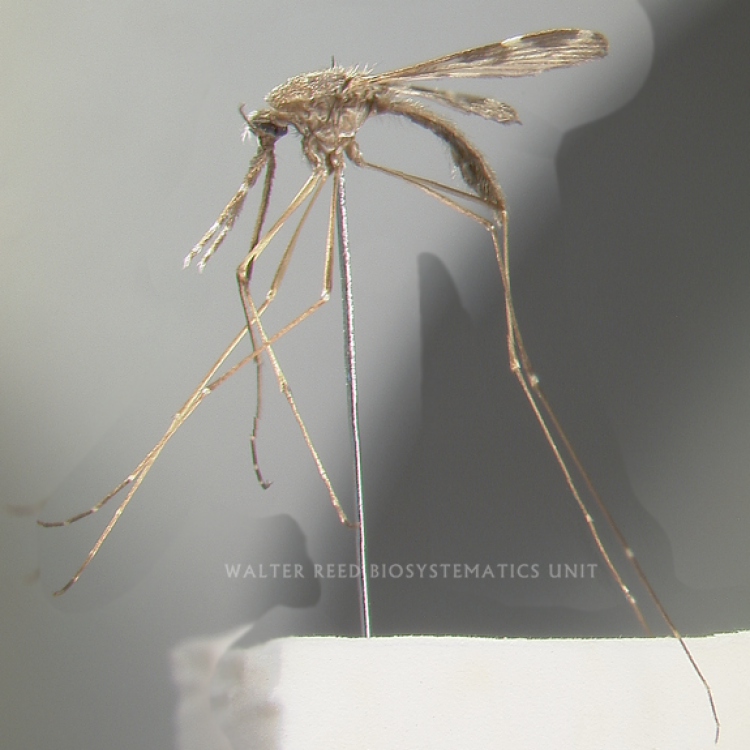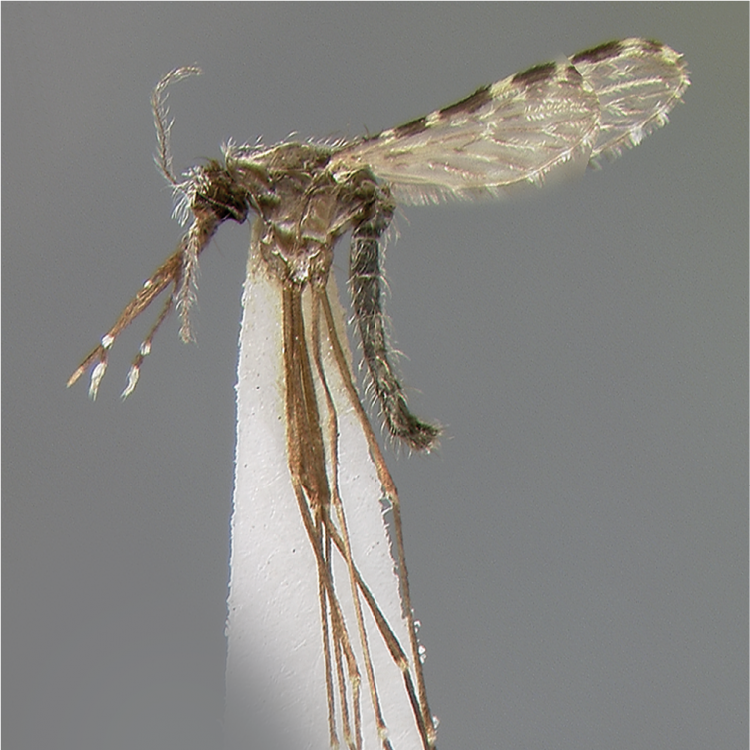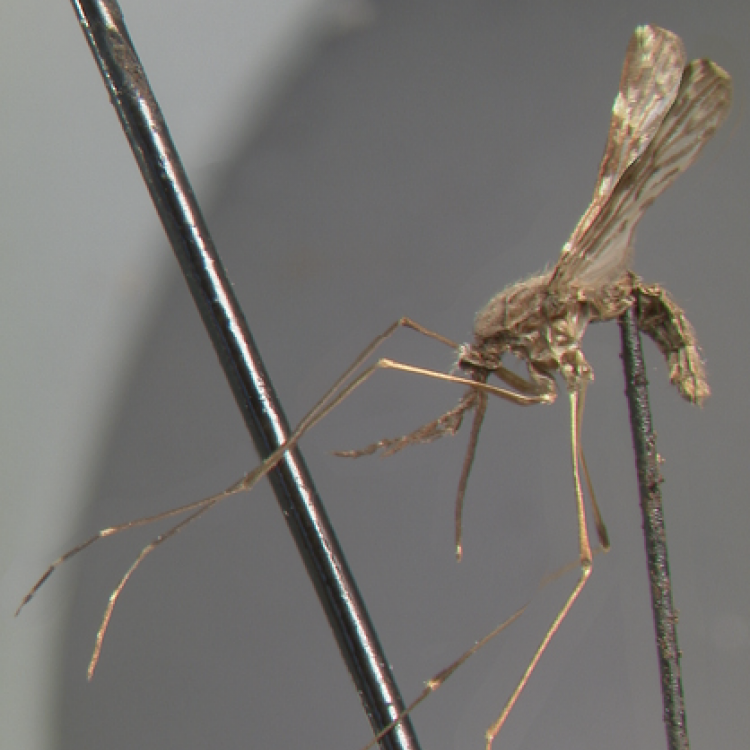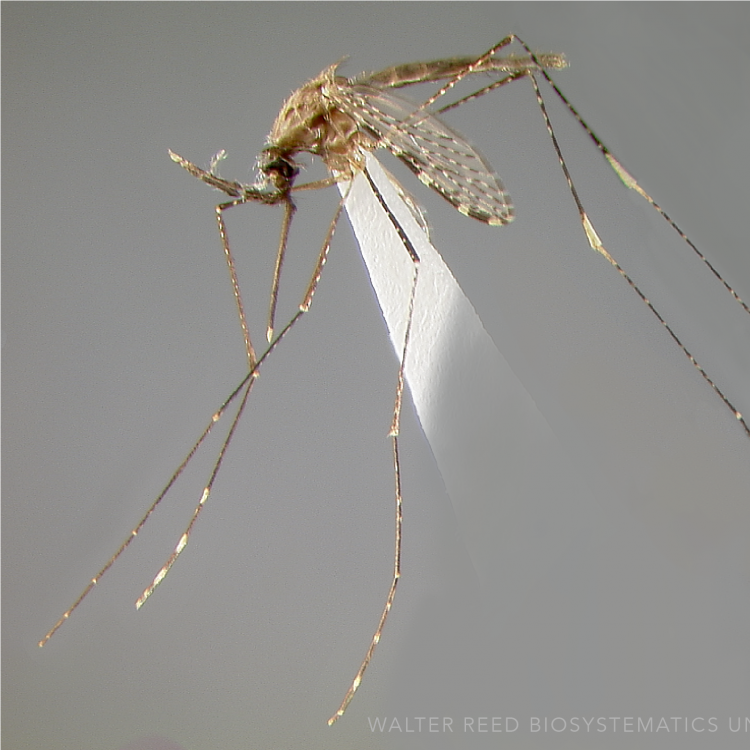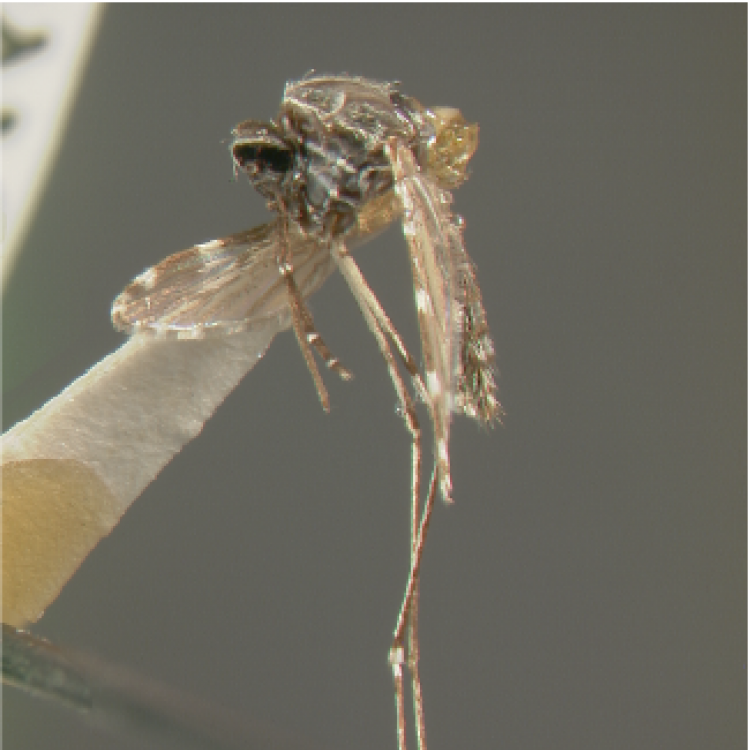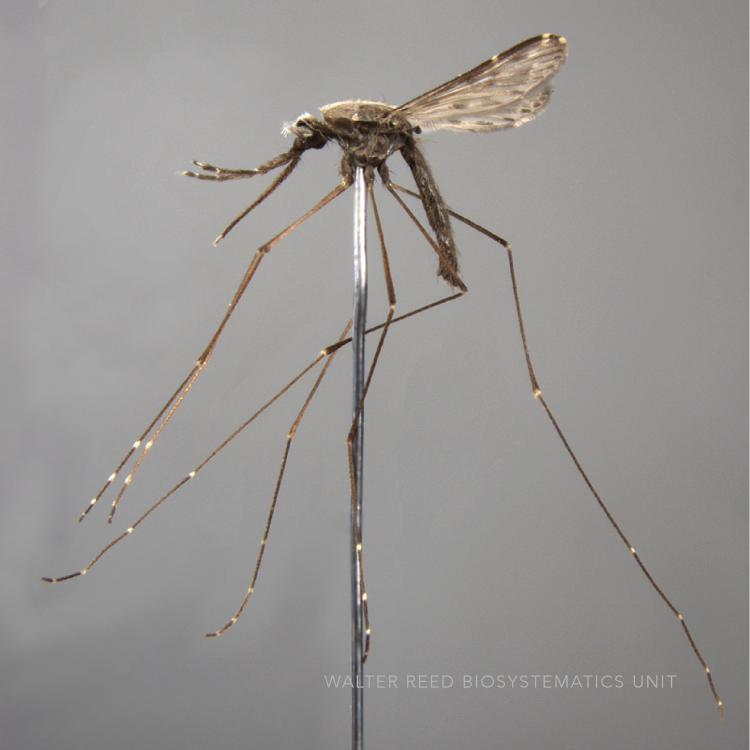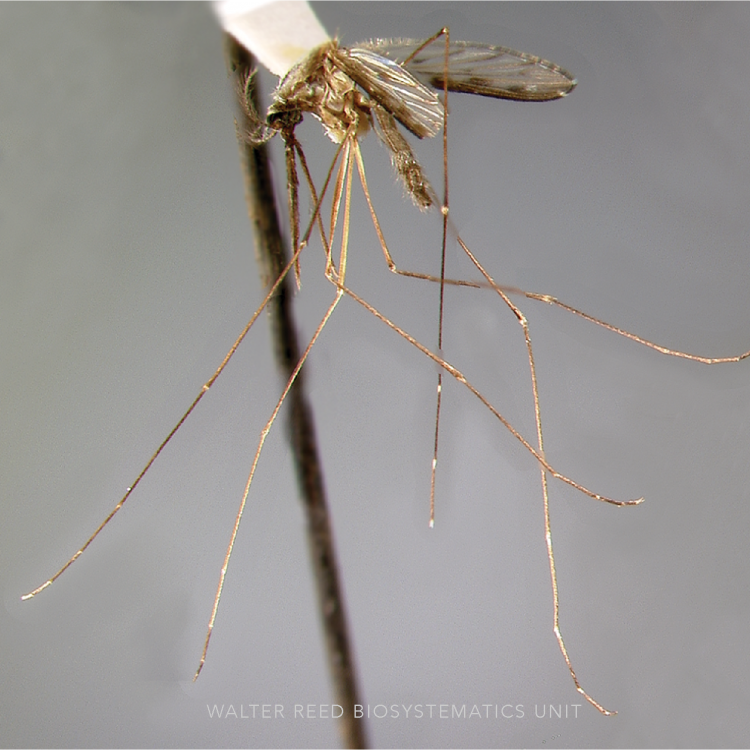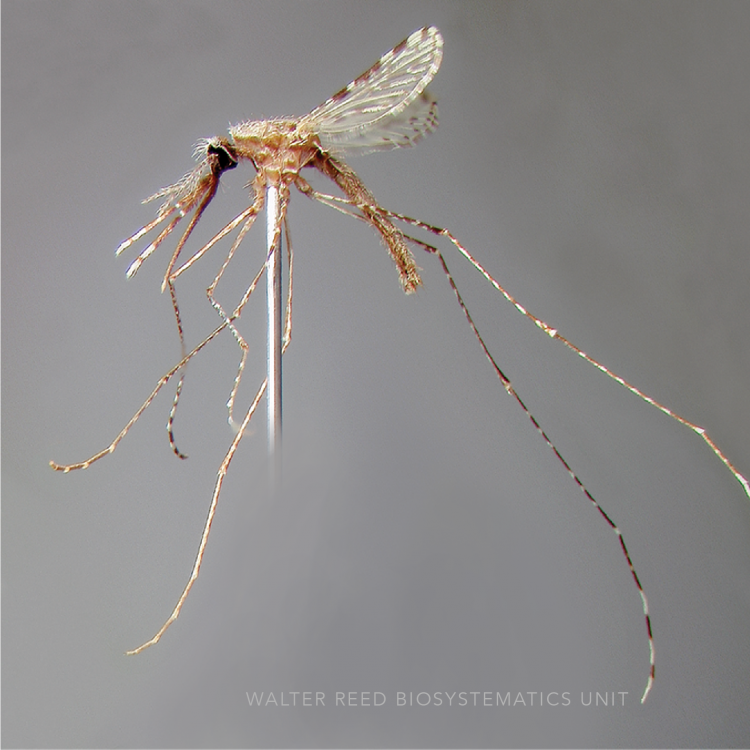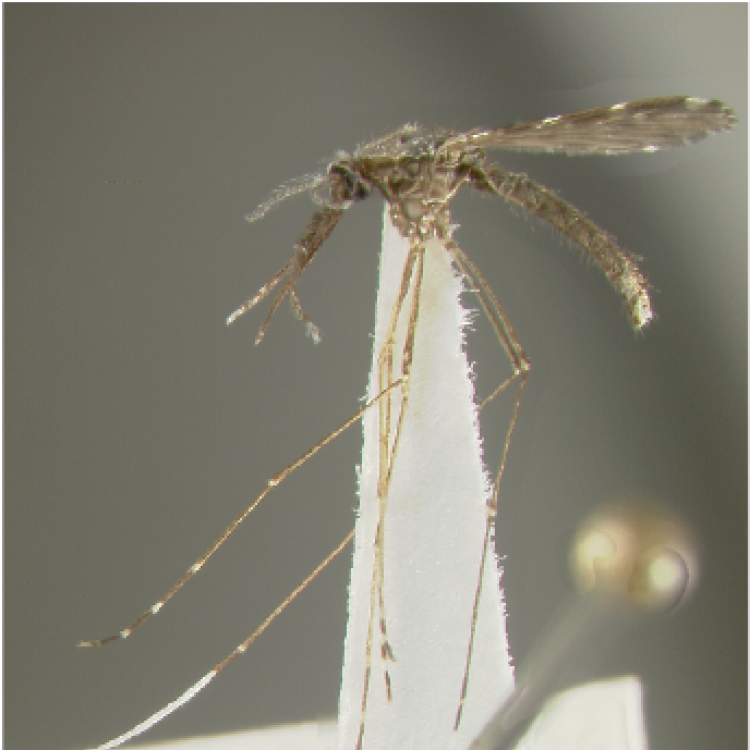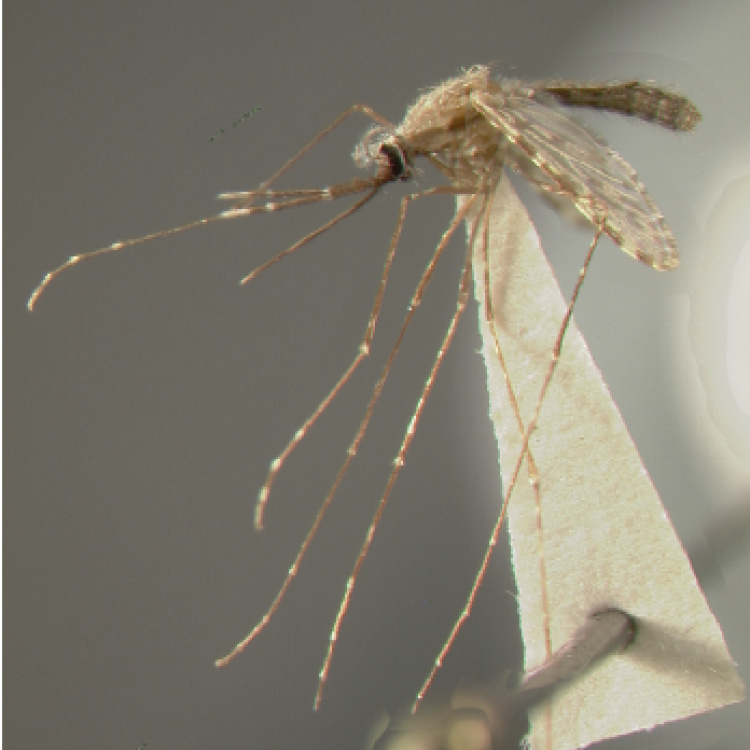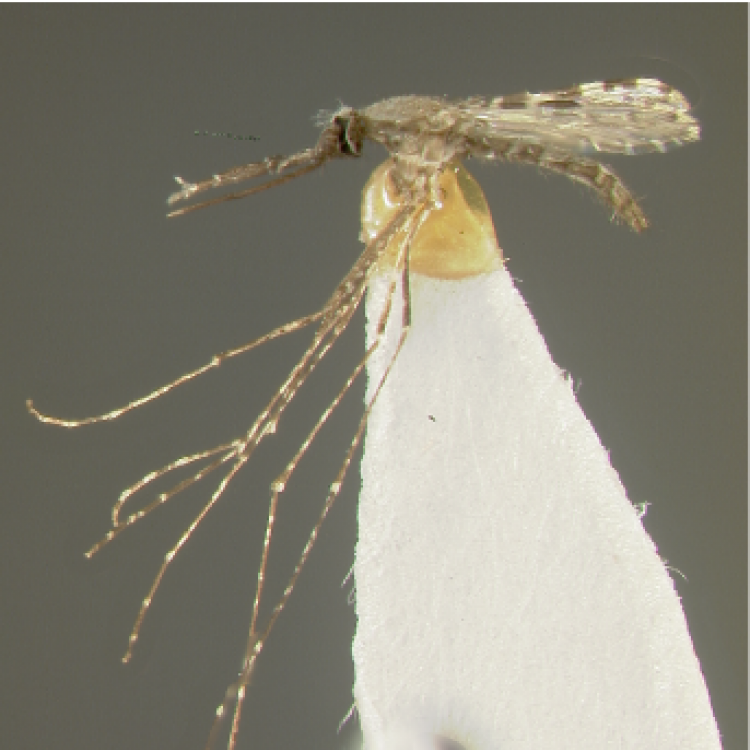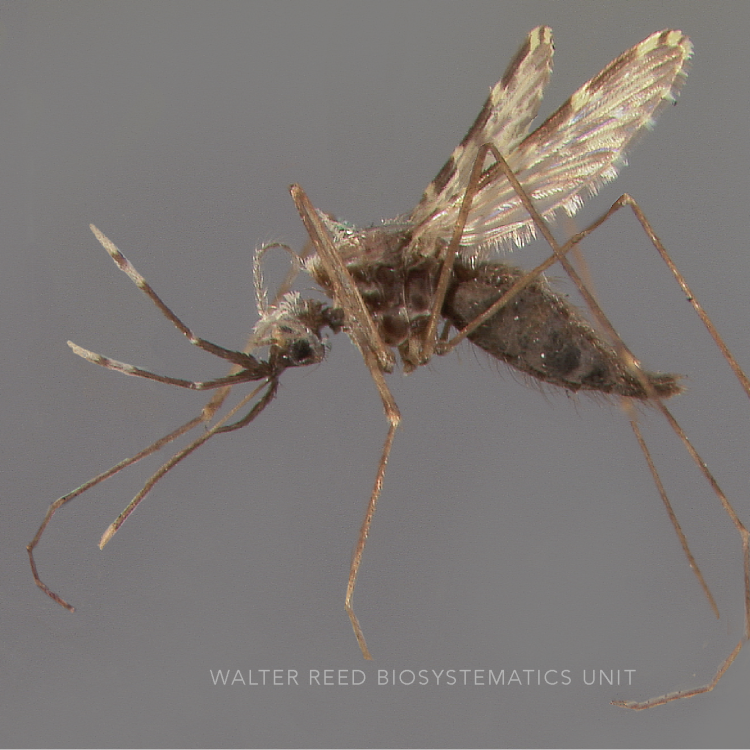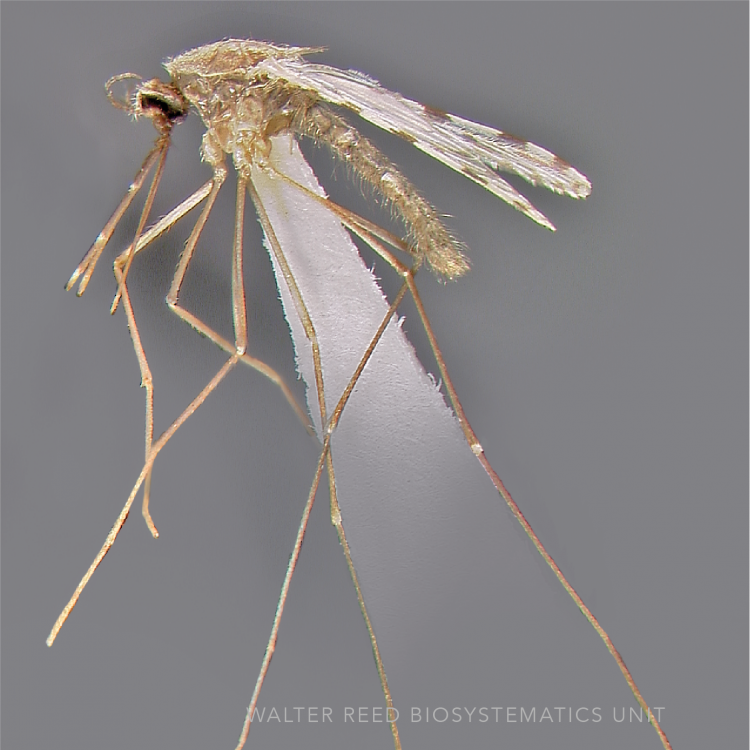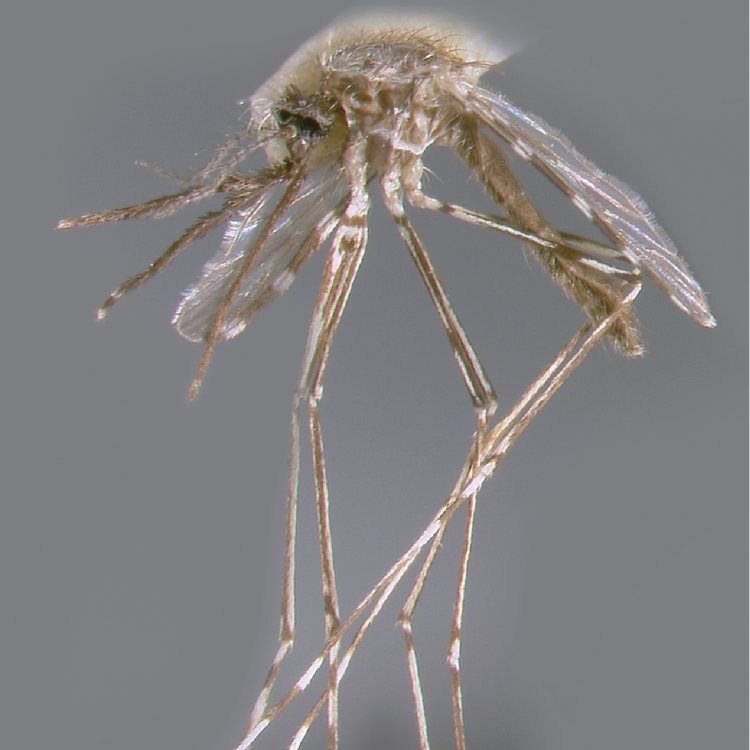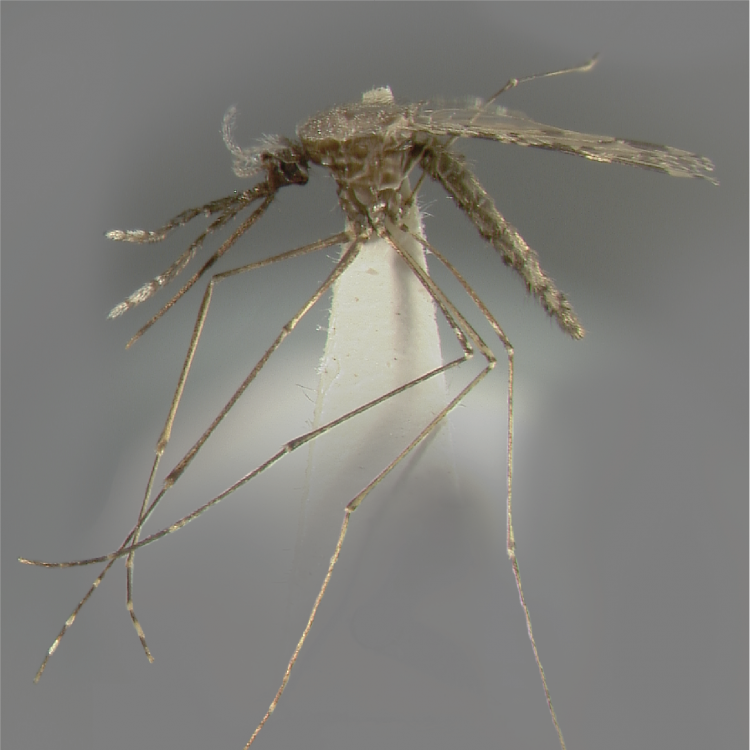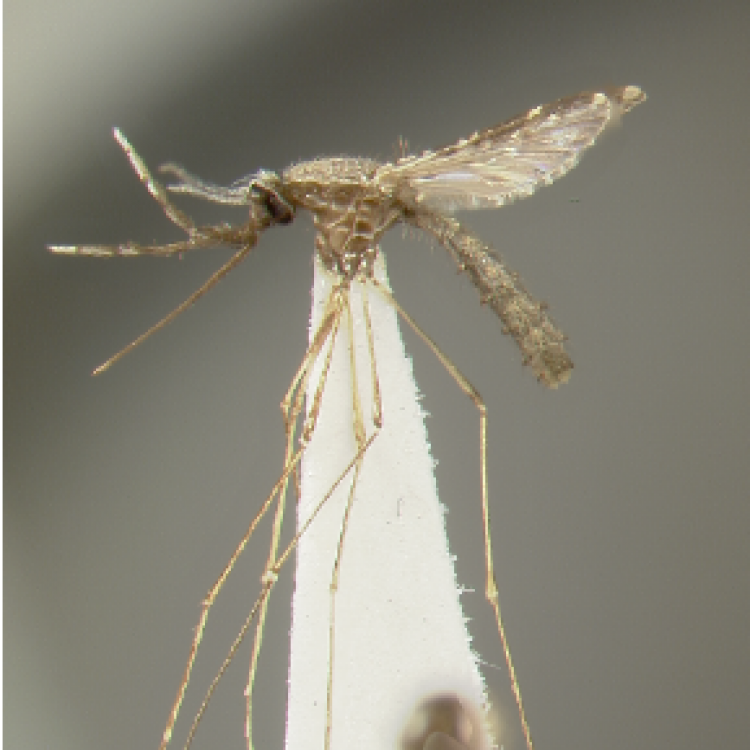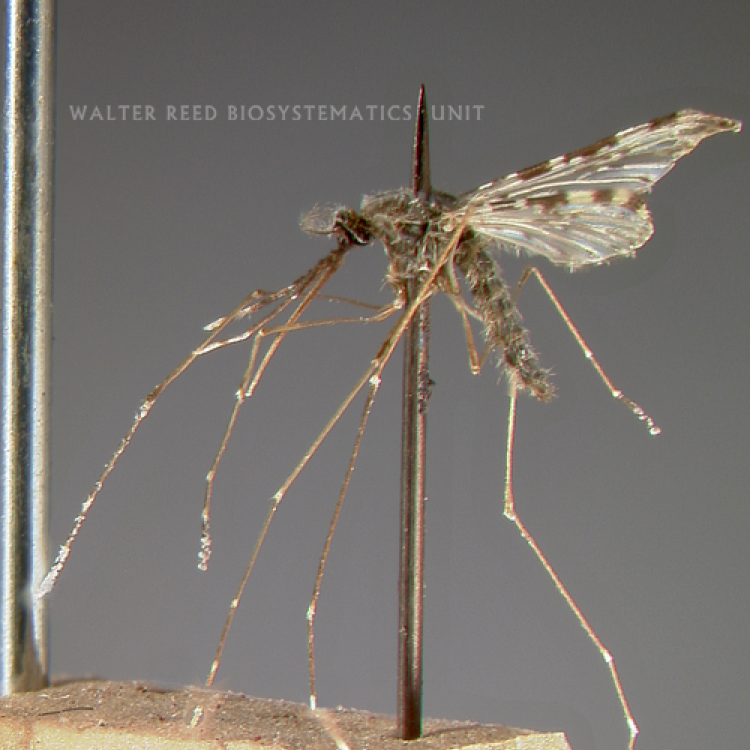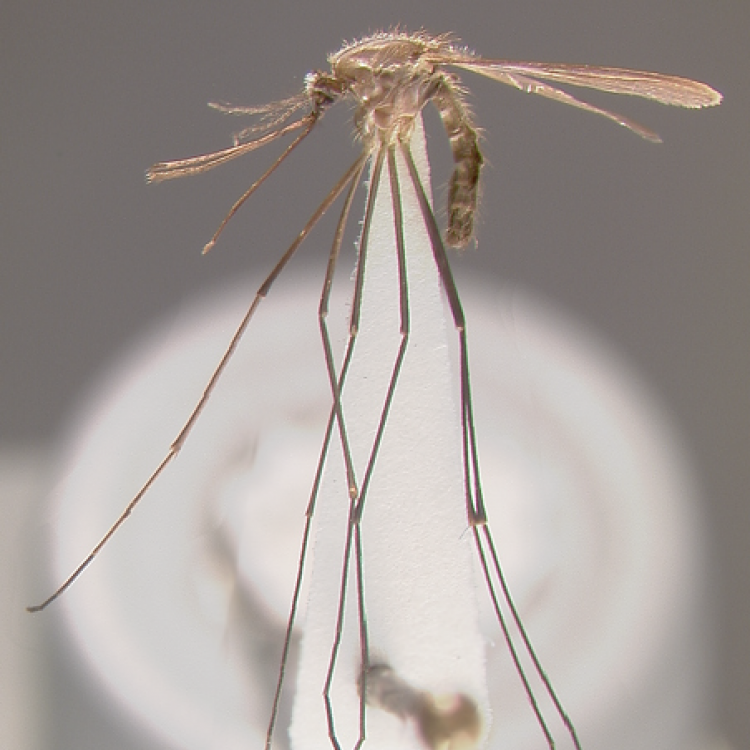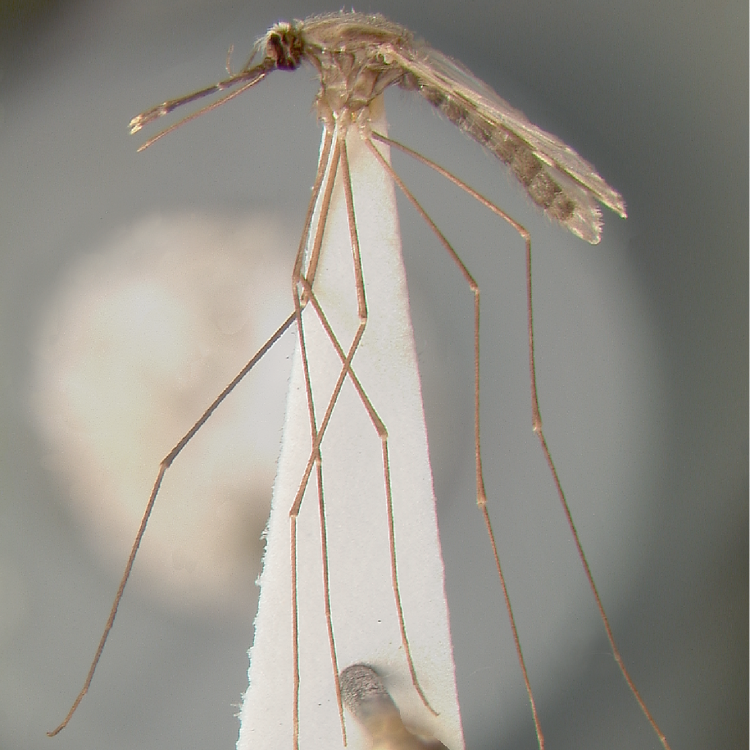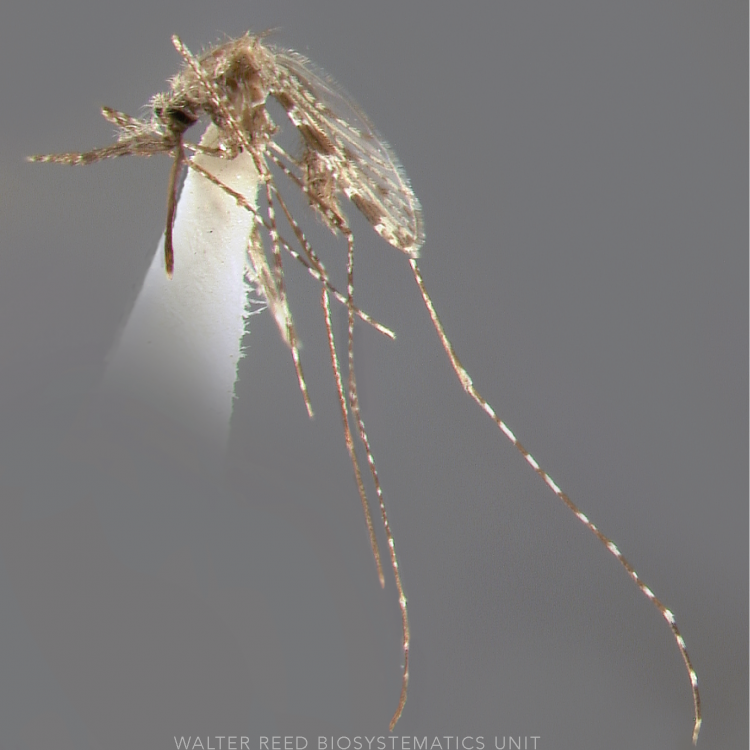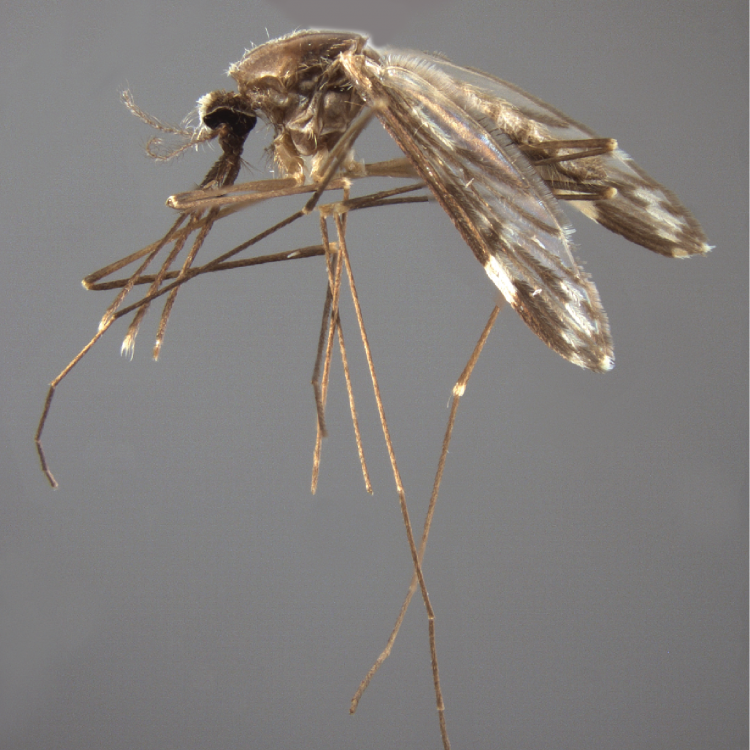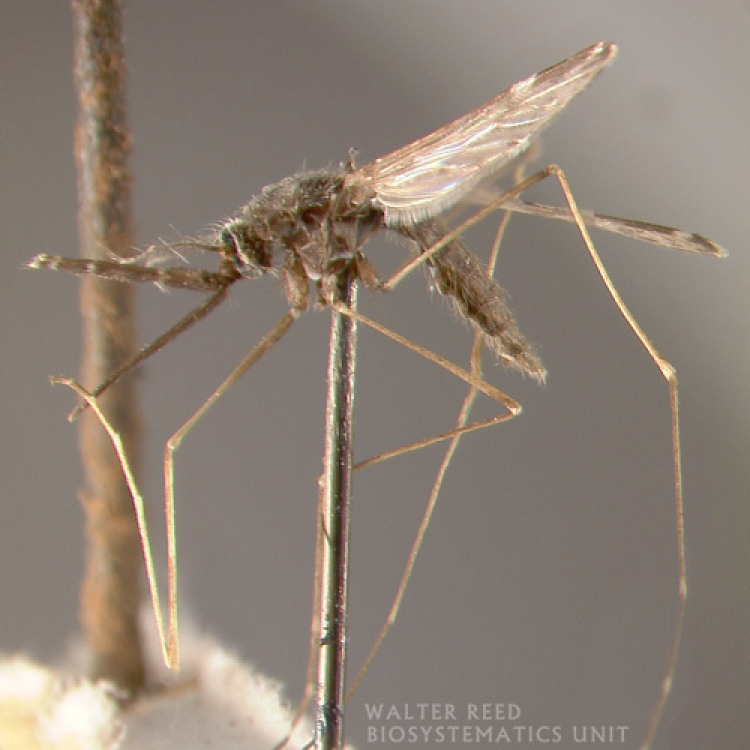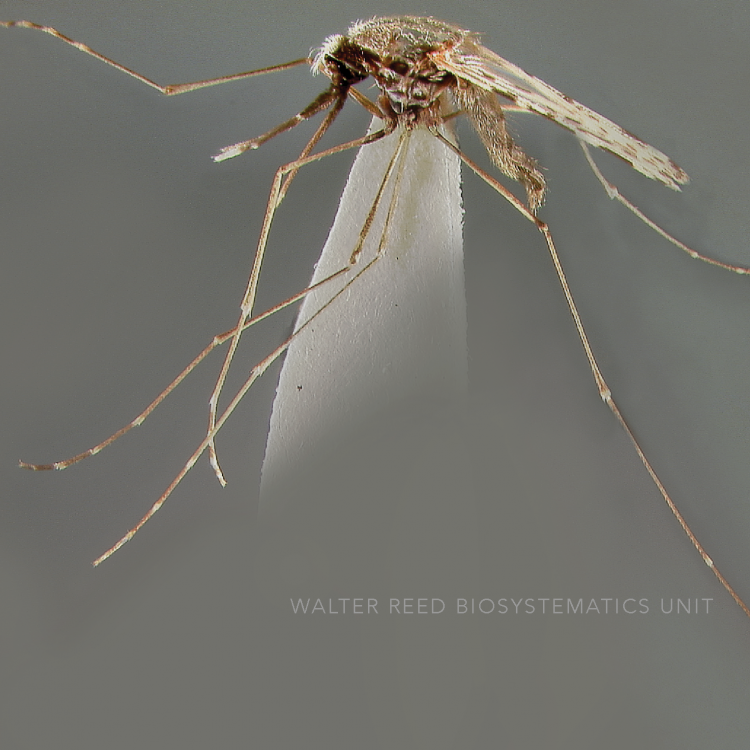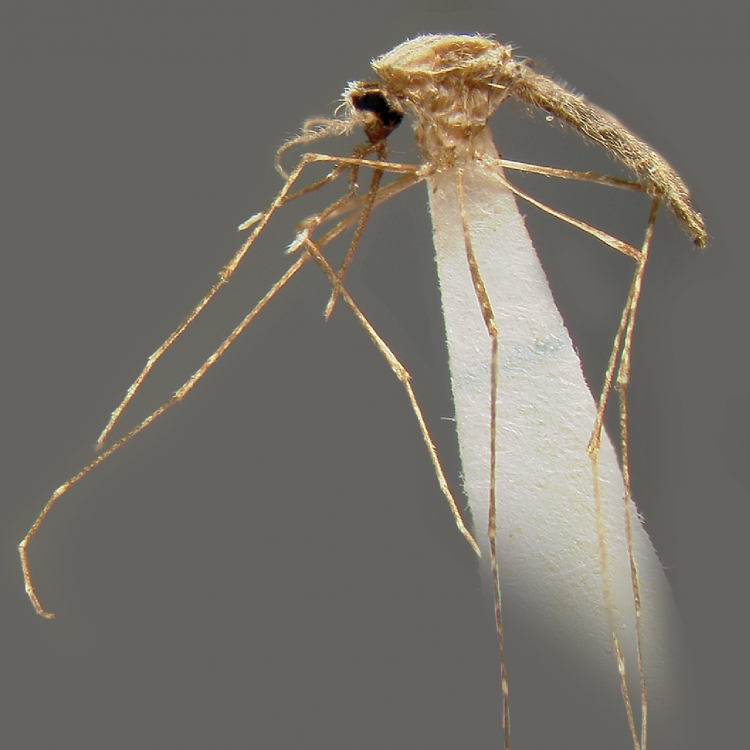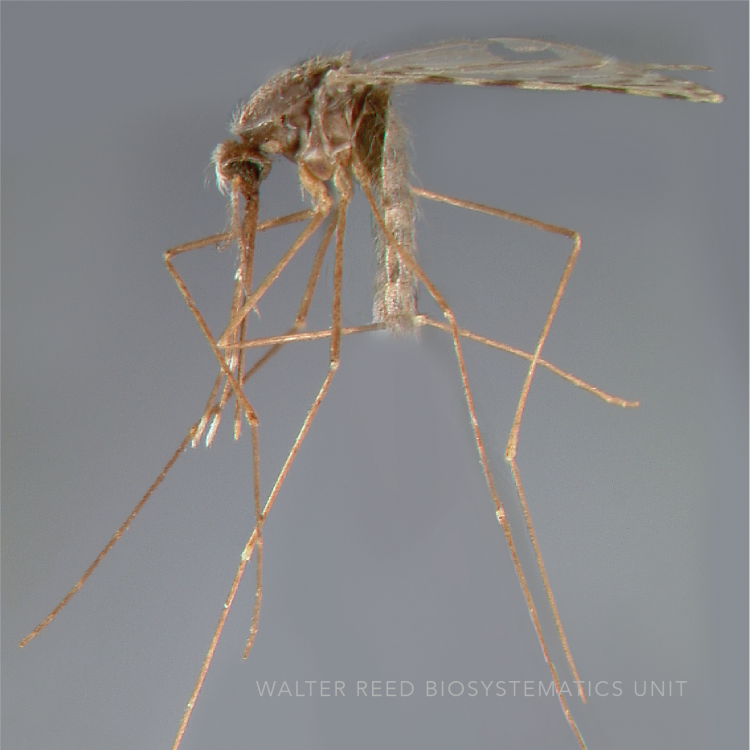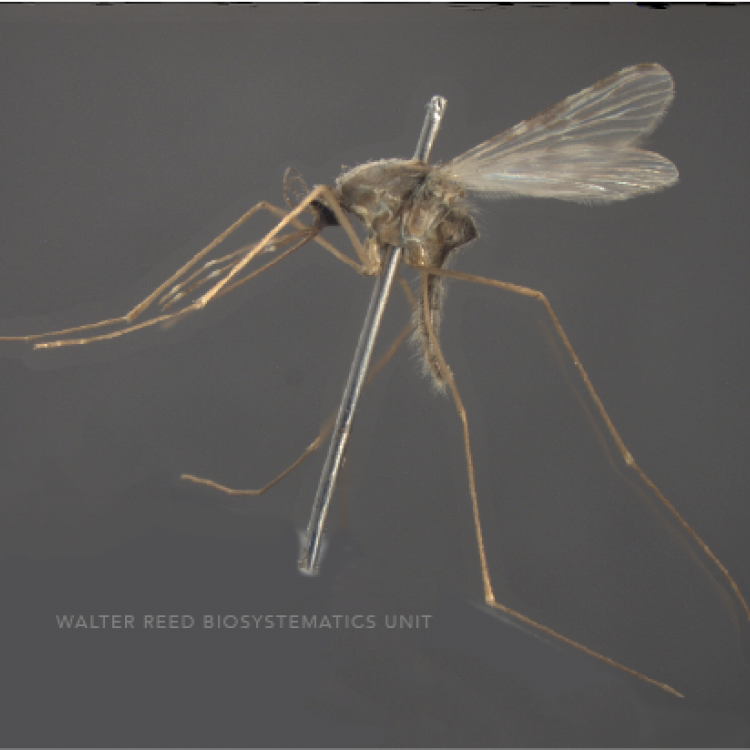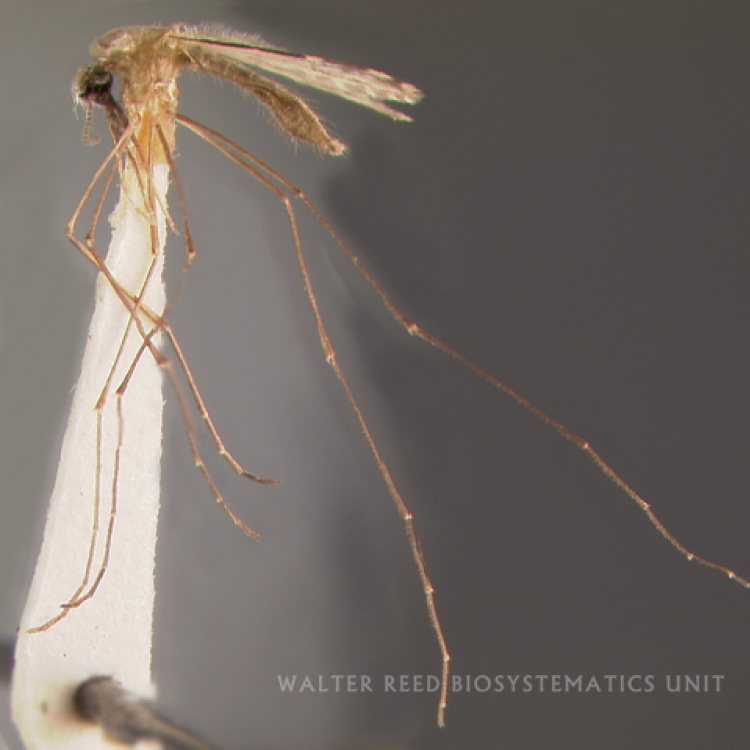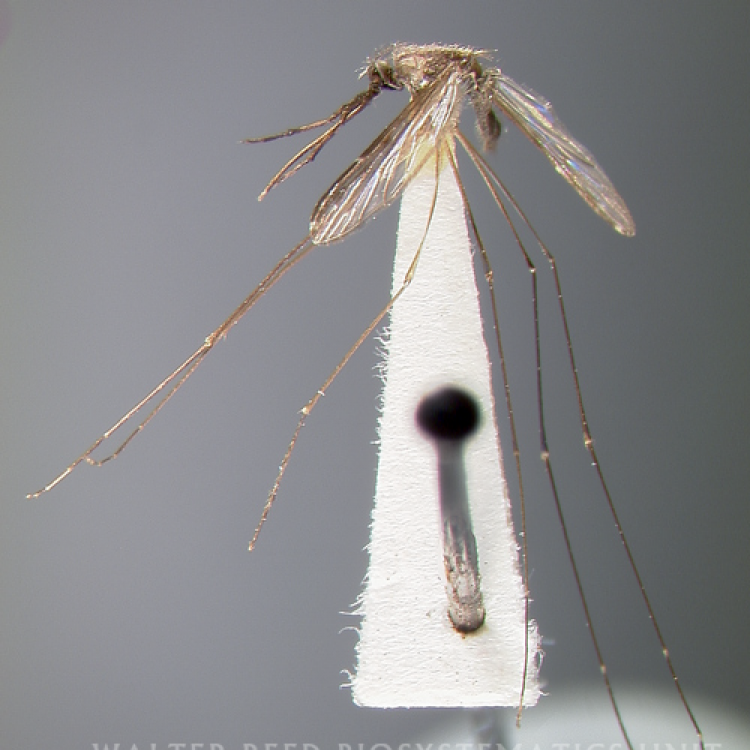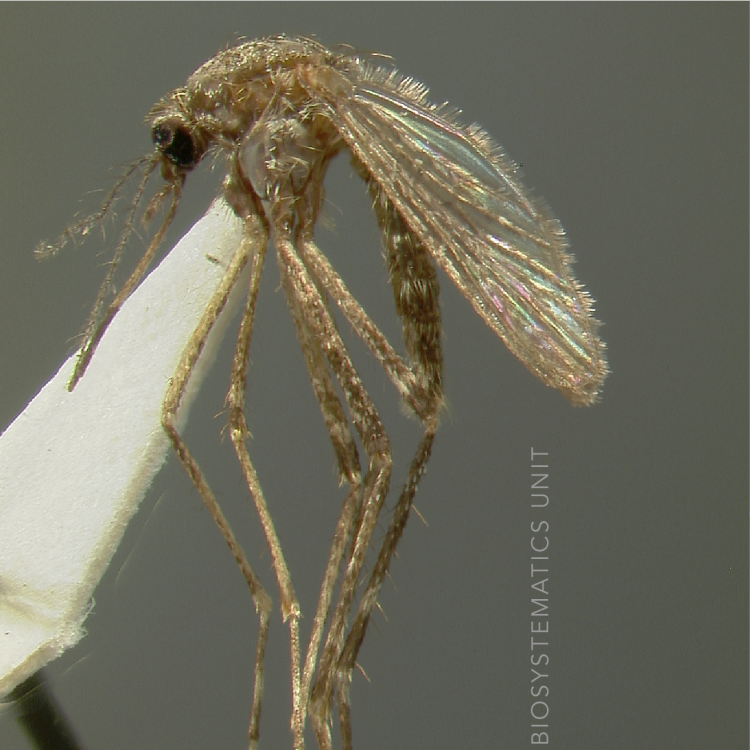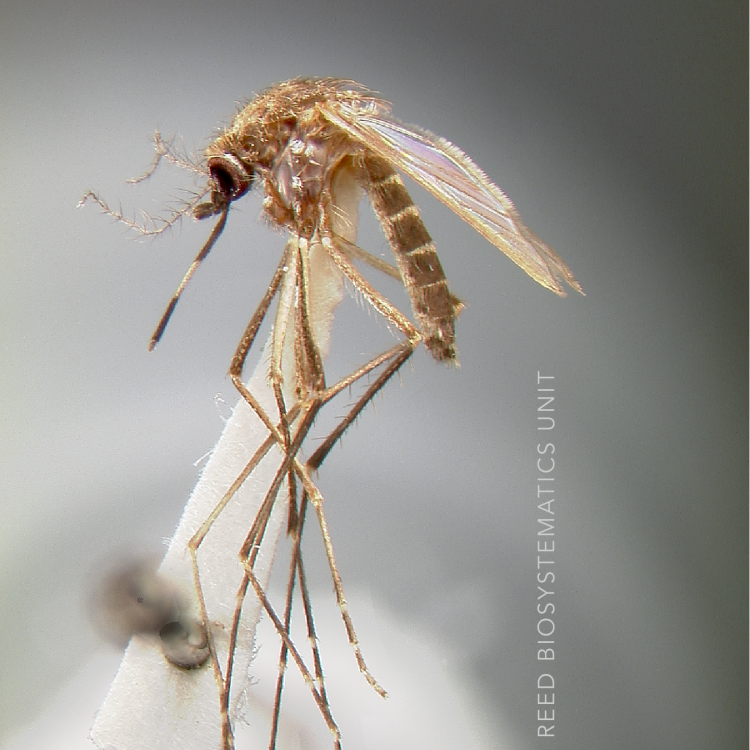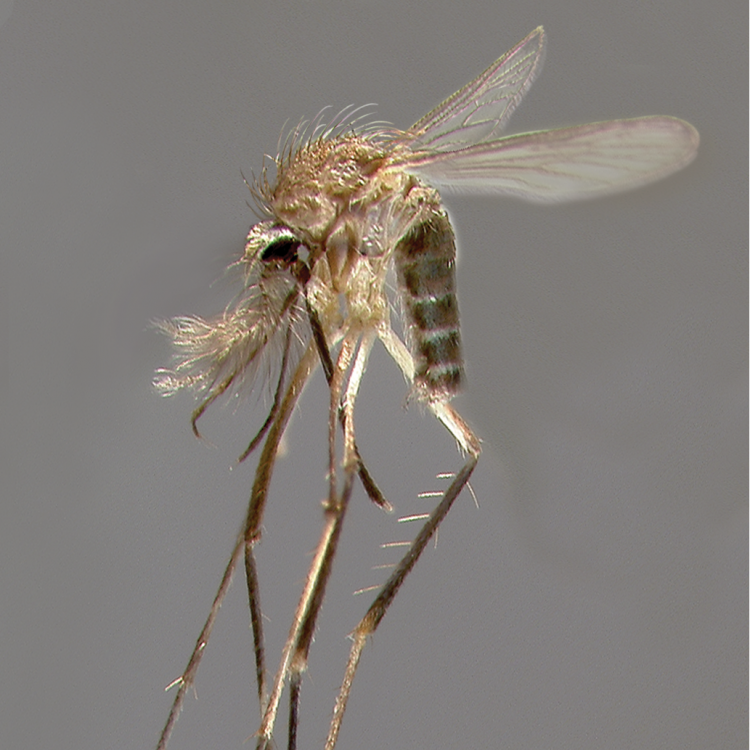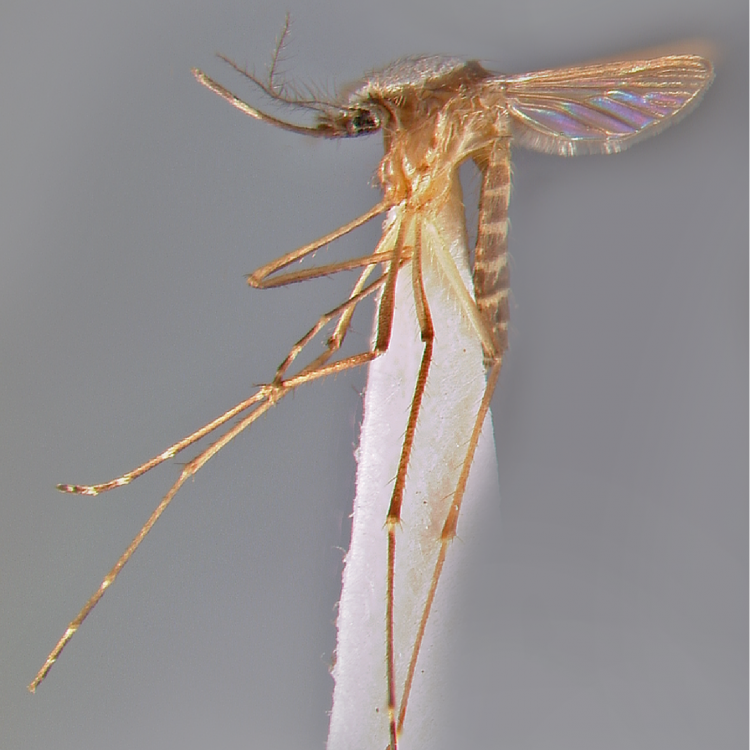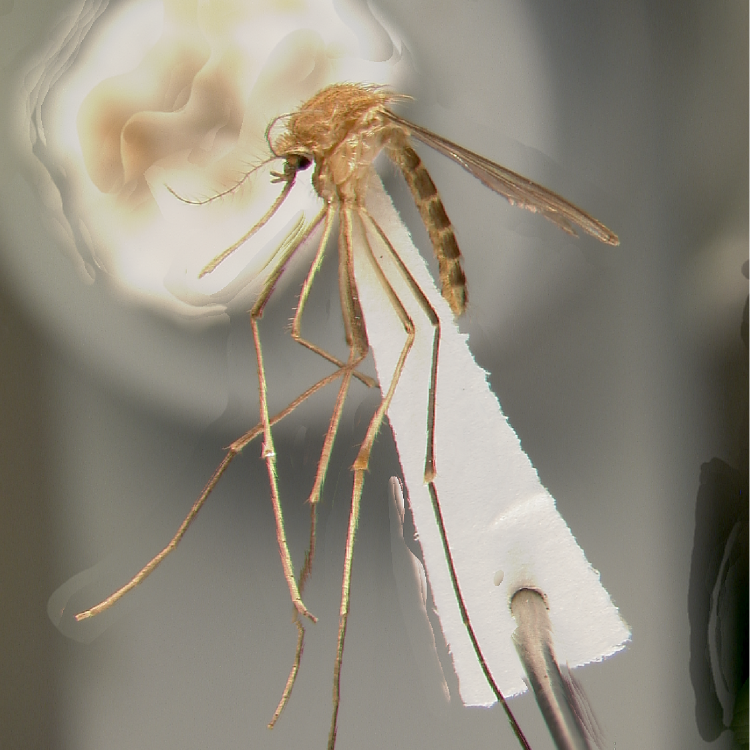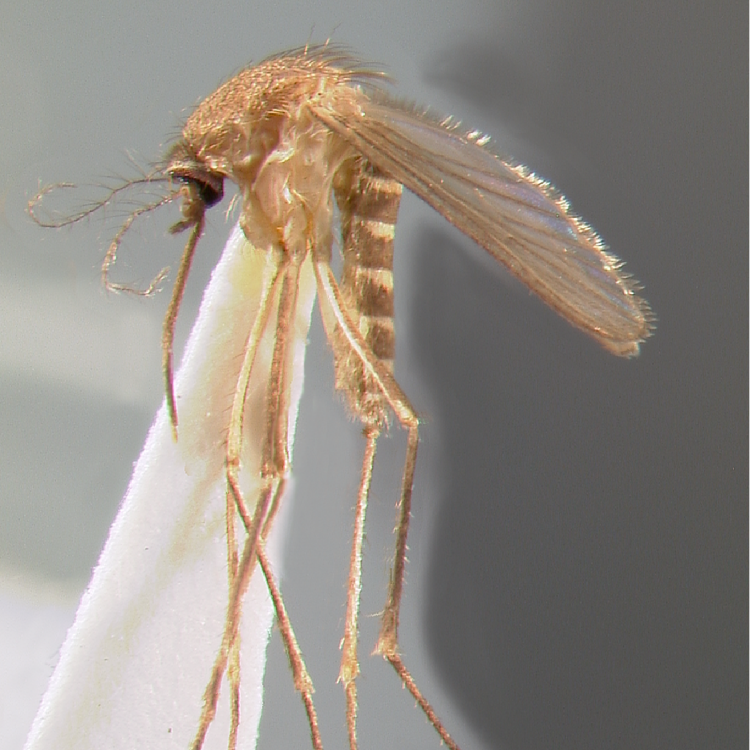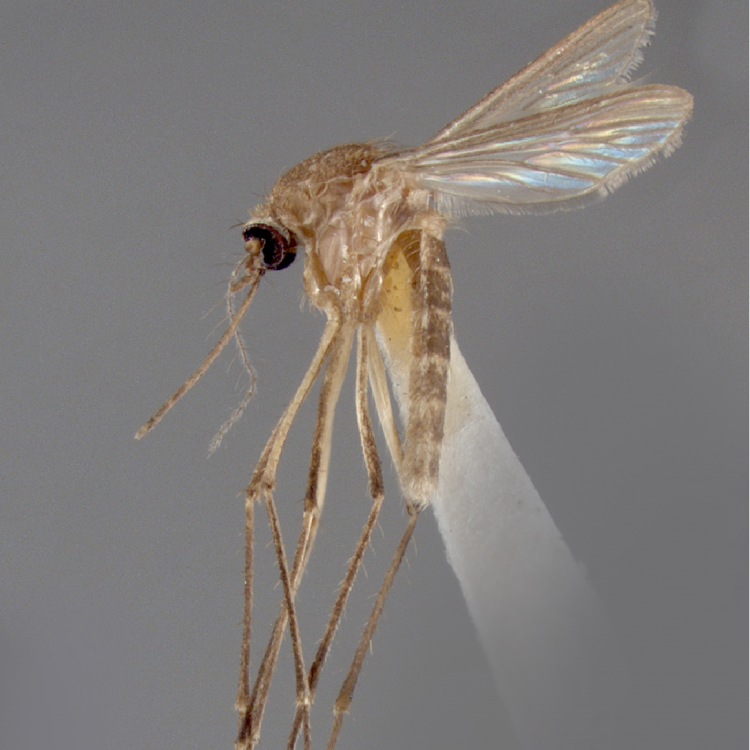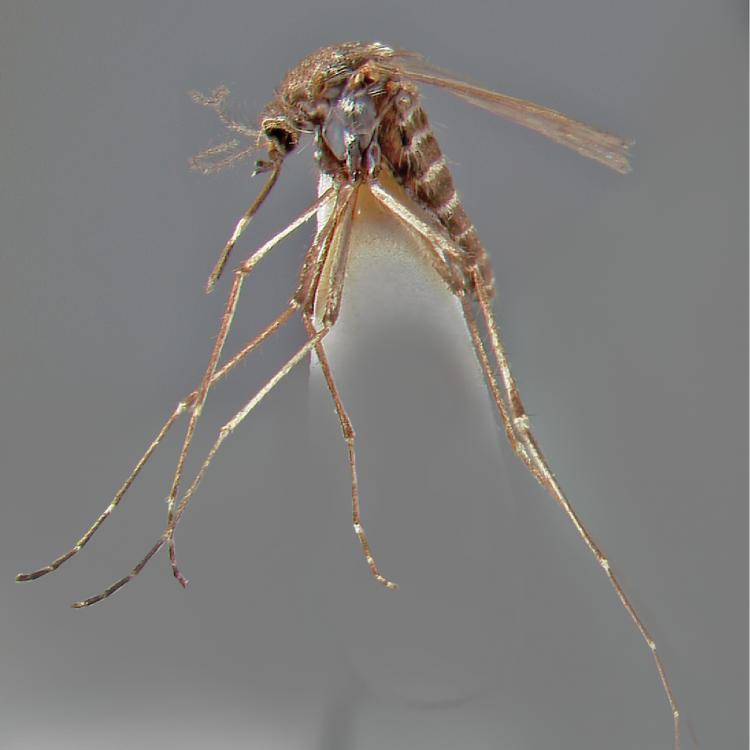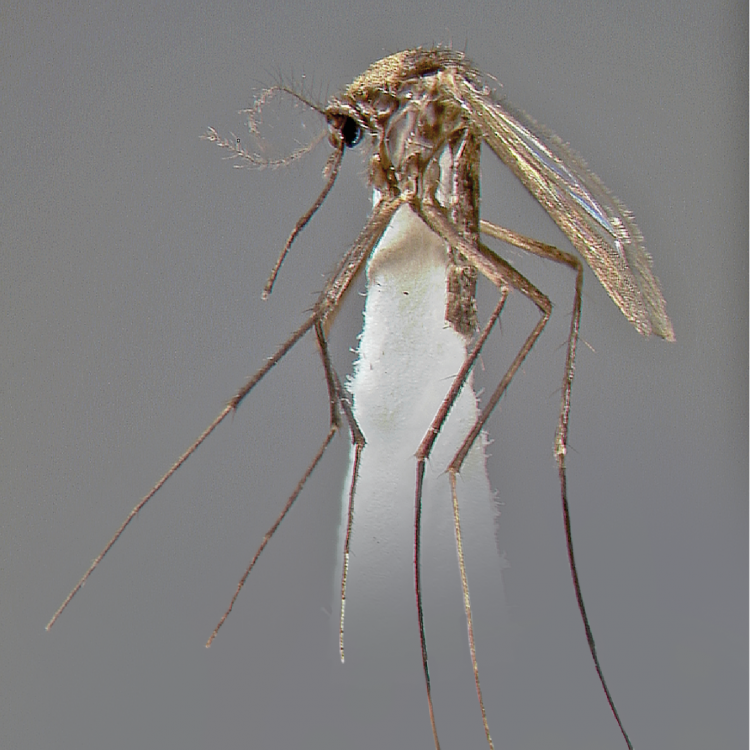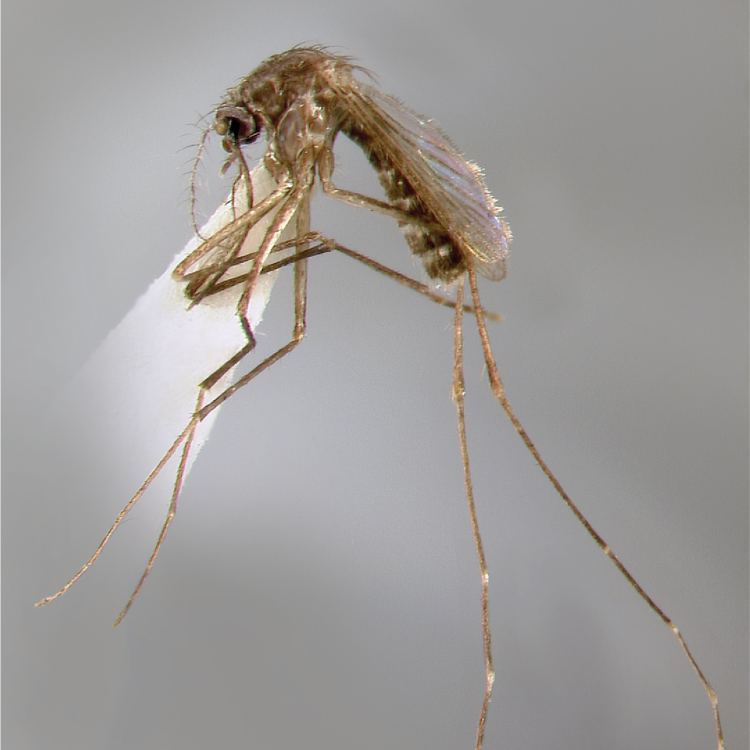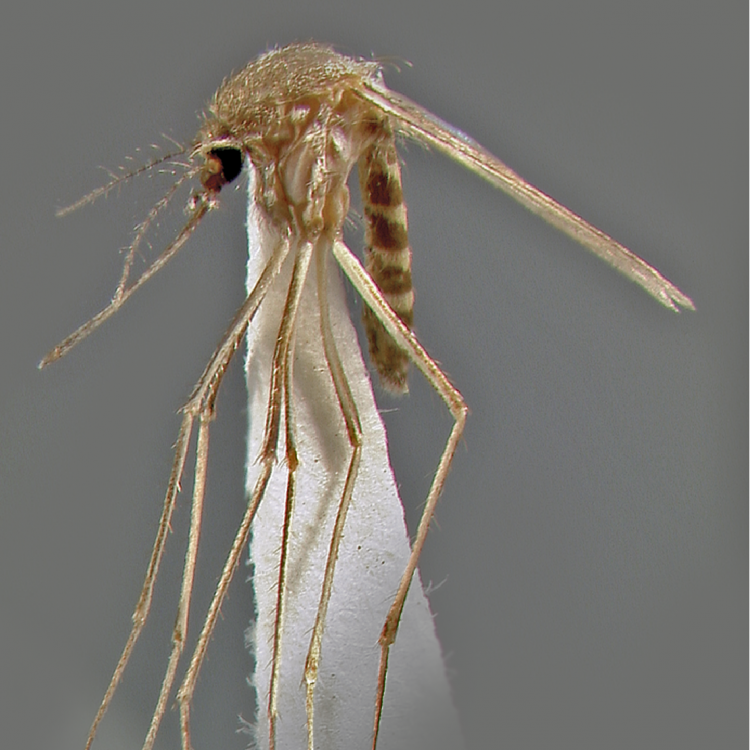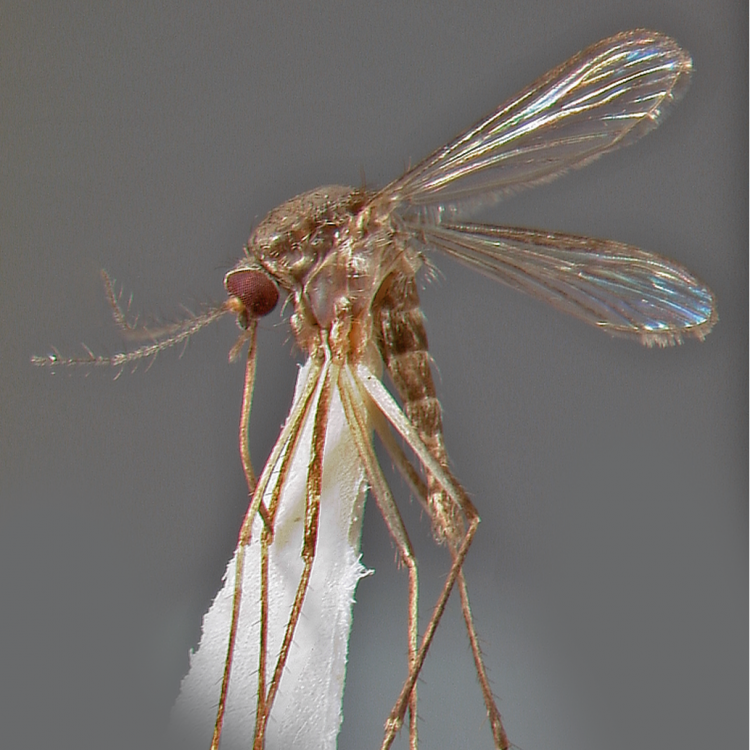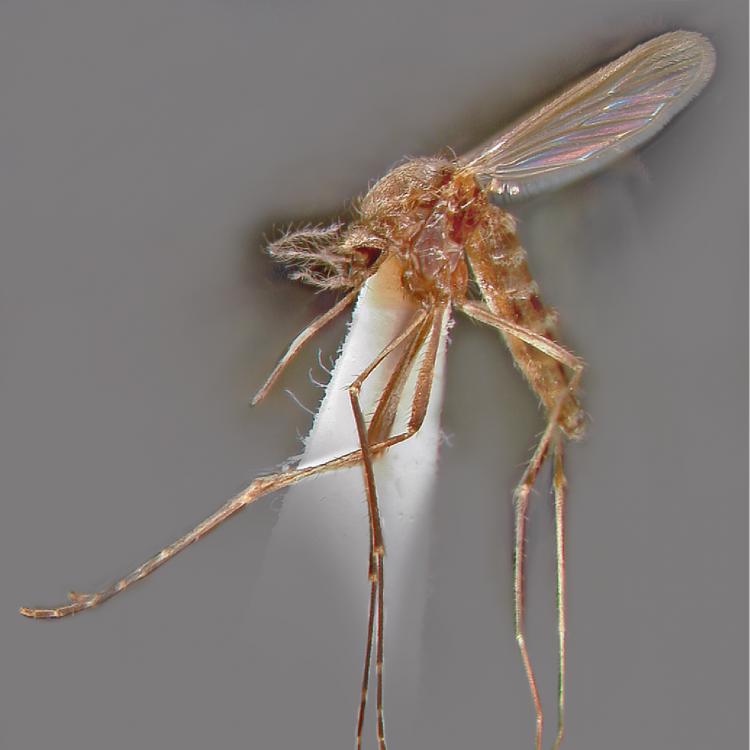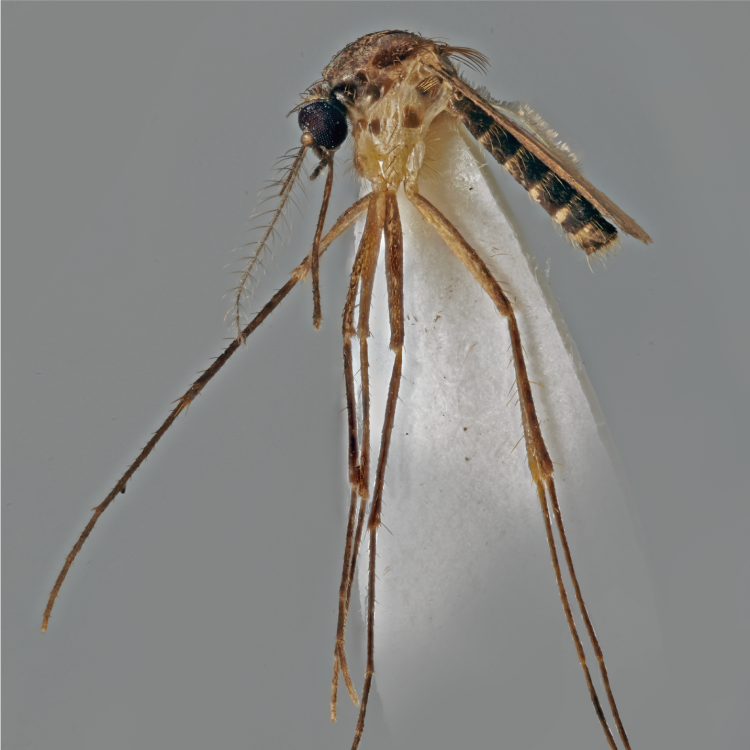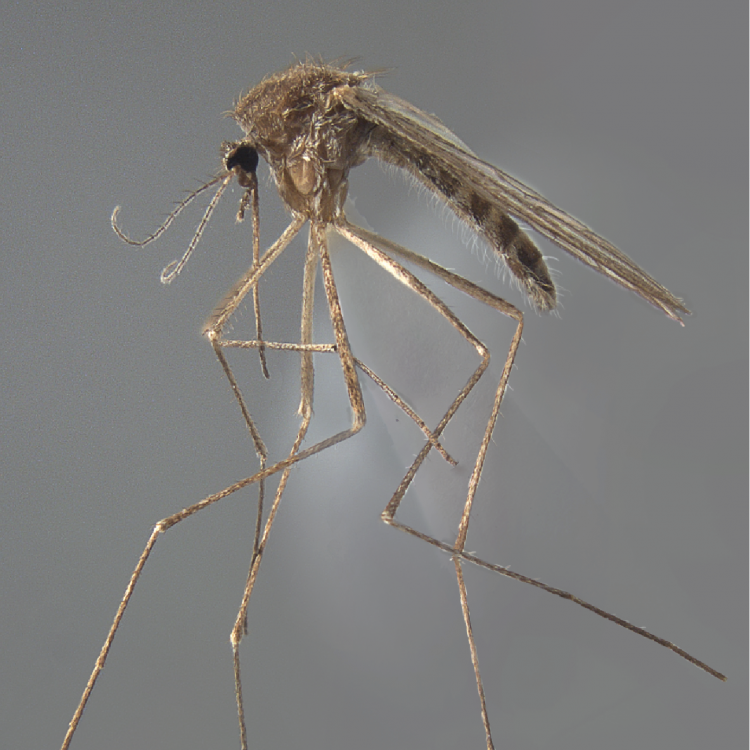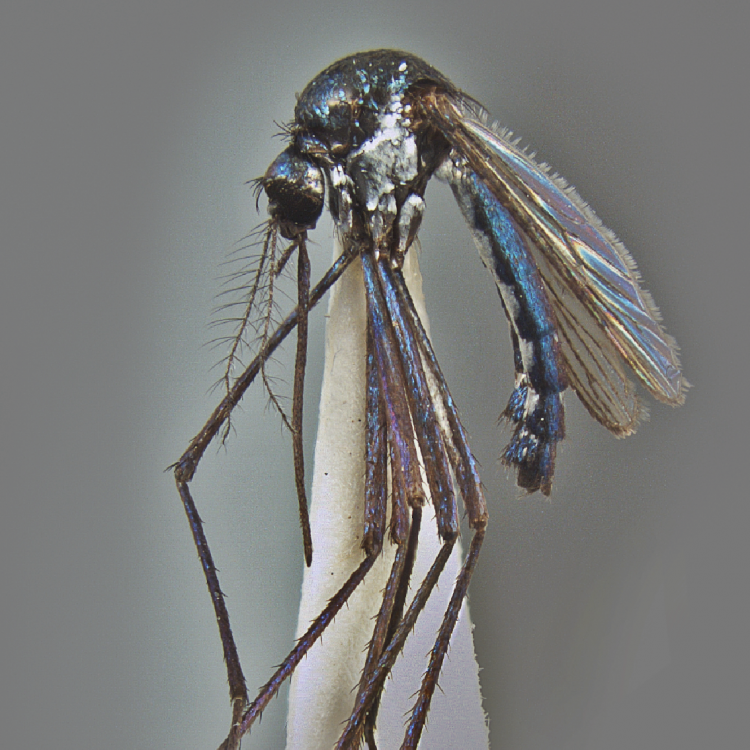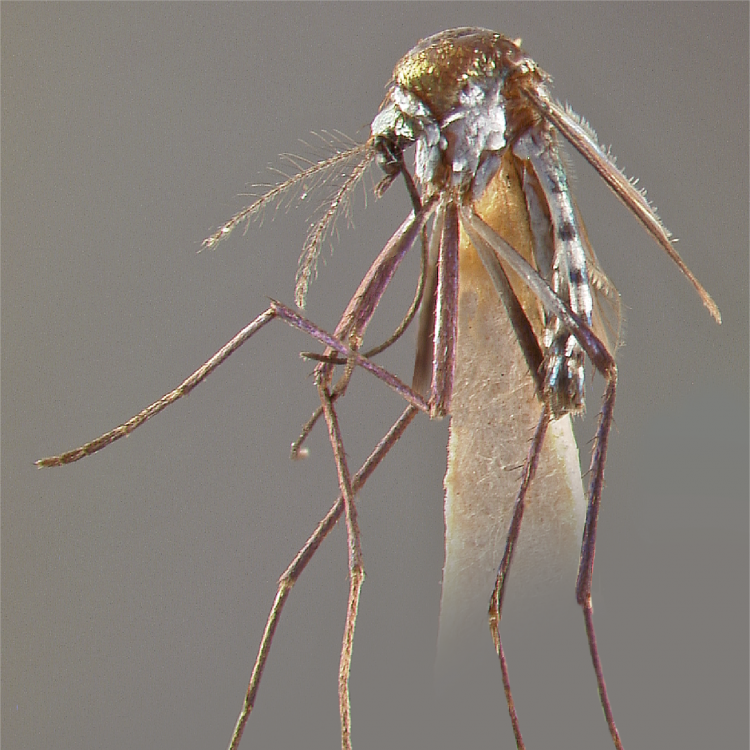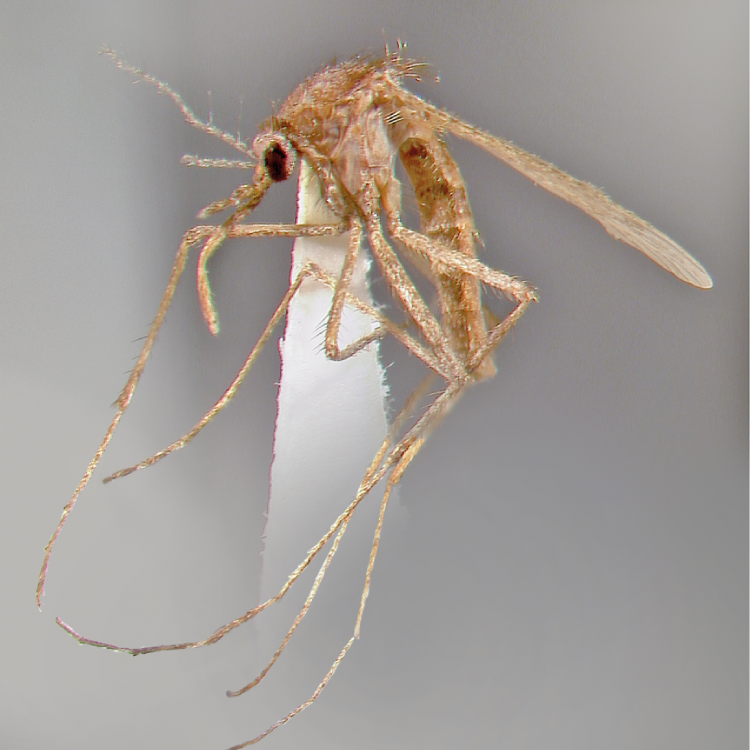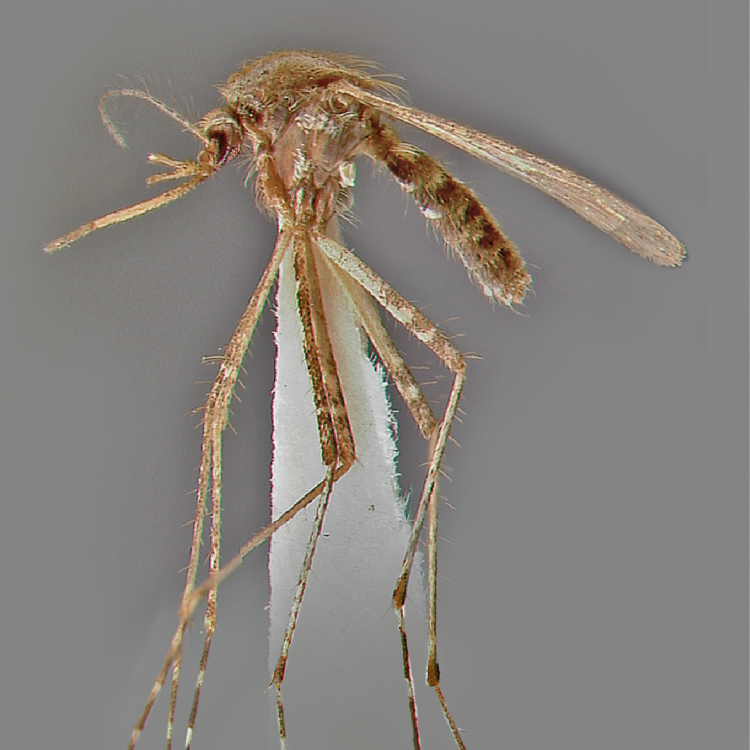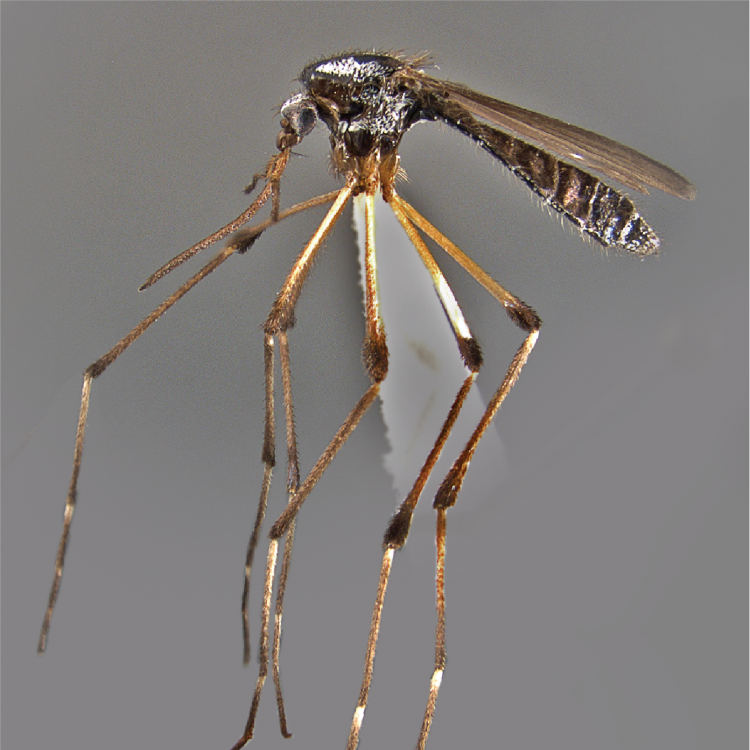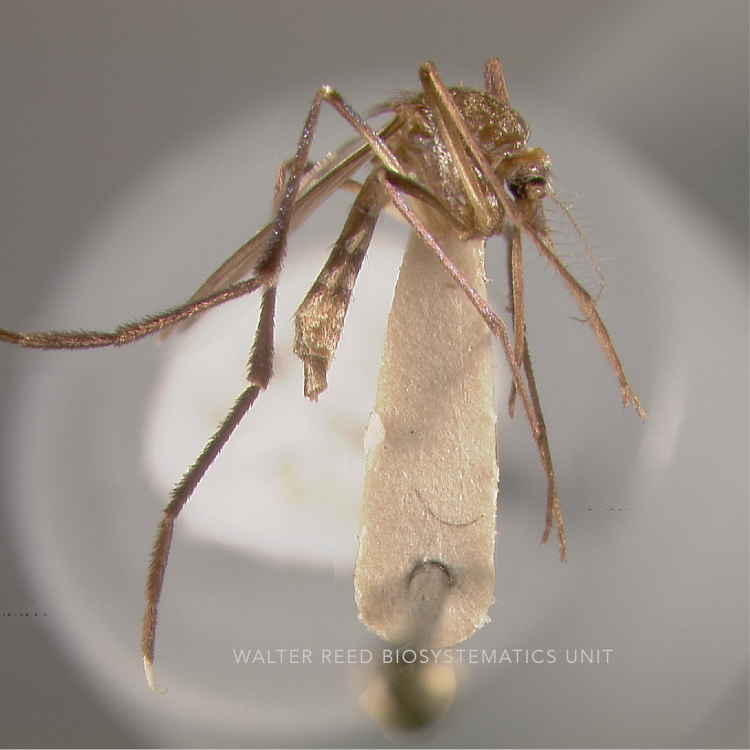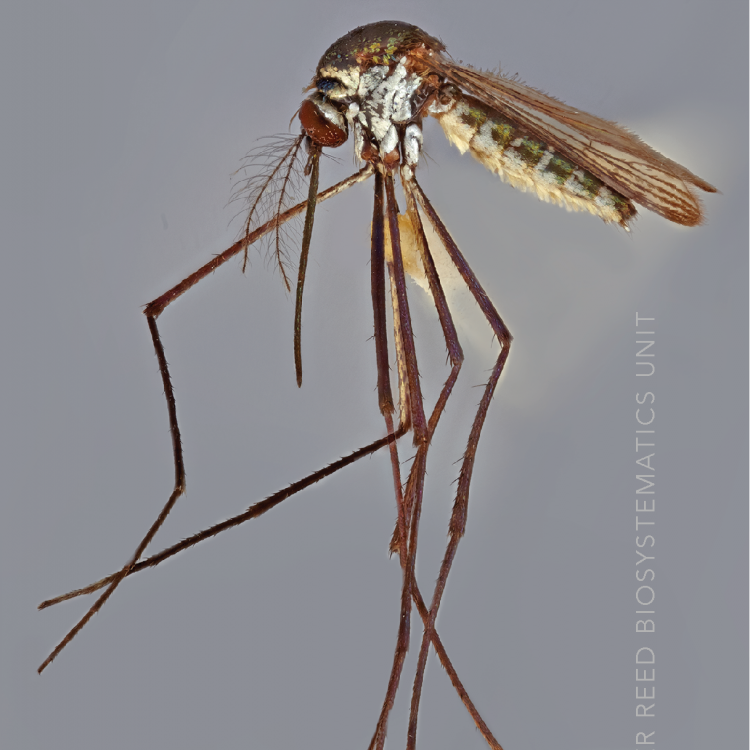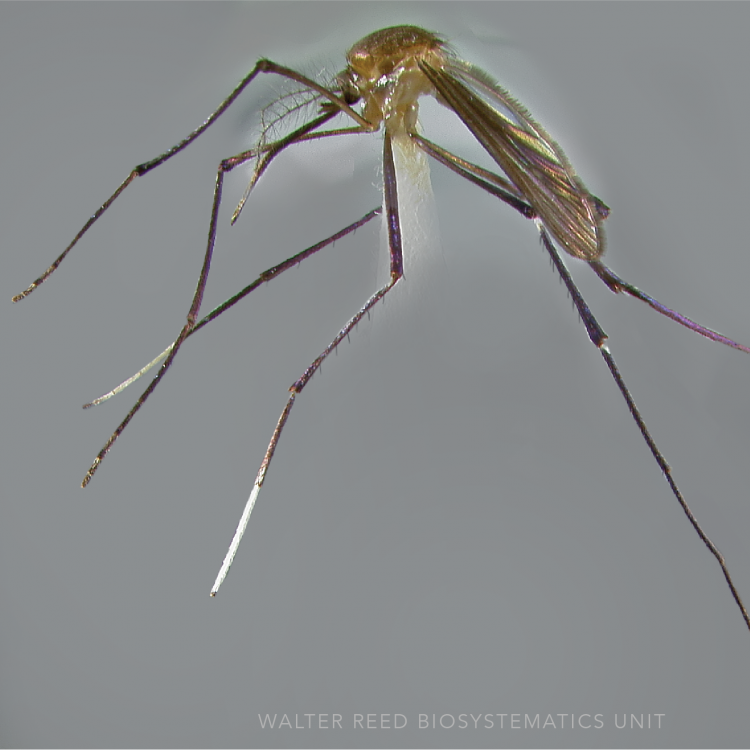ORIENTAL AND AUSTRALIAN REGIONS
Etymology: Thomas Lane Bancroft
Anopheles bancroftii comprises two valid subspecies: An. bancroftii bancroftii, and An. bancroftii barbiventris Brug which was described from Celebes. Molecular studies have revealed the presence of at least six molecularly identifiable forms of An. bancroftii (A1, A2, B, C1, C2 and D) based on nuclear rDNA ITS-2 restriction profiles. The status of the group is further complicated by the reported hybridization (in nature as well as in the laboratory) of An. bancroftii and An. pseudobarbirostris Ludlow, which vary only in the pattern and size of some pale patches on the wing fringe. However, these two taxa are reported in sympatry in Papua New Guinea, and were shown to exhibit unique ITS-2 restriction profiles with respect to each other and the other An. bancroftii genotypes. Further work is needed to exactly define the taxonomic status and distribution of An. bancroftii bancroftii, An. bancroftii barbiventris, An. pseudobarbirostris, and to formally describe any additional cryptic taxa within the Bancroftii Group.
Type locality: Burpengary, Queensland, Australia
Type depository: Natural History Museum, London, England, United Kingdom (NHMUK)
DIAGNOSTIC CHARACTERS (Click photos to view; mouse over and click large photo to zoom in.)
ADULT (illustrated): Head: Palpus entirely dark and shaggy in appearance. Thorax: Mesepimeral scales sparse. Legs: Fe-I–III with many scattered pale scales ventrally (not evident in photo). Fe-I distinctly swollen basally. Ta-III5 dark, Ta-III1–4 with narrow apical pale bands. Wing: Subcostal pale spot present; wing fringe with pale patches at ends of veins M1, M2, M3+4 and CuA, and without a pale patch at termination of vein R4+5. Abdomen: II–VIII-S with basal tufts; VII-S with laterally visible scale-tuft.
LARVA (not illustrated): Head: Antennal shaft swollen basally, narrowing beyond seta 1-A; seta 1-A large, multi-branched; seta 2-C indistinctly aciculate; seta 3-C 20–40 branched. Abdominal segments: Seta 1 well-developed palmate, at least on some segments. Spiracular apparatus: Anterior median process present on spiracular apparatus.
TAXONOMIC KEYS
None
![]()
WRBU - Anopheles - Myzorhynchus - IndoMalayan Region - Adult
![]()
WRBU - Anopheles - Myzorhynchus - IndoMalay Region - Larva
![]()
WRBU - Genera - Global - Adult
![]()
WRBU - Genera - Global - Larva
![]()
WRBU - Anopheles Subgenera and Series - Australasia - Adult
![]()
WRBU - Anopheles Subgenera and Series - Indomalaya - Adult
![]()
WRBU - Anopheles Subgenera and Series - Indomalaya - Larva
Exemplar DNA sequences
An. bancroftii genotype A1 ITS2: AF203381
An. bancroftii genotype A2 ITS2: AF203378
An. bancroftii genotype B ITS2: AF203379
An. bancroftii genotype C1 ITS2: AF203382
An. bancroftii genotype C2 ITS2: AF203380
An. bancroftii genotype D ITS2: AF203383
BIONOMICS
Immatures
Immature An. bancroftii in the Northern Territories (presumably genotype A1) and Queensland (presumably genotype A2) (Australia) are common in dark, highly organic waters of heavily vegetated freshwater swamps (especially those with water hyacinth), and amongst weeds, grass, reeds or roots in water holes or stream margins. In Papua New Guinea, habitats of An. bancroftii (presumably genotype A2) are limited to jungle ponds, and cut-off pools in the Digoel River where aquatic vegetation is comprised mainly of Azolla, algae and reeds.
Adults
Both genotypes A1 (includes Northern Territories, Australia and New Caledonia) and A2 (includes Queensland, Australia) are very aggressive biters of man and other vertebrates during the night, and have been reported to bite during the day amongst shady vegetation. Plasmodium infection rates of 4.3% have been reported in genotype A2 from Merauke & Tanahmerah, Papua New Guinea, where precipitin tests confirmed 90% human blood meals, even amongst those mosquitoes collected resting in cattle sheds. In contrast, other populations (e.g., Cairns, Australia) appear totally indifferent to man, even at high densities.
DISTRIBUTION NOTES

WRBU VECTOR HAZARD REPORTS
None; View other WRBU Vector Hazard Reports
Available GIS Models
An. bancroftii_Nyari_1 Australasia Region
IMPORTANT REFERENCES (full citations below)
Giles, 1902: 511 (A)
Bancroft 1908: 14 (F; as genus Myzorhynchus)
Lee & Woodhill 1944: 111 (M*, F*, L*, E*)
Bonne-Wepster & Swellengrebel 1953: 214 (M*, F*, L*)
Peters 1962: 164 (P*)
Lee et al. 1987b: 22 (F key, taxonomy, bionomics, distribution, review)
Beebe et al. 2001 (molecular taxonomy, genotypes A1, A2, B, C1, C2, D)
Beebe et al. 2013 (Bancroftii Group)
Pol et al. 2018 (distribution, New Caledonia)
CURRENT SYNONYMS
None
CURRENT SUBSPECIES
ssp. barbiventris Brug
1938 (M, F*, L). Type locality: Kalawara, Palow, Res Menado, Celebes [Sulawesi] (NHMUK). Distribution: Indonesia (Sumatra). References: Bonne-Wepster & Swellengrebel 1953: 222 (M*, F*, L*); Lee et al. 1987b: 38 (F key, tax., bion., distr., review; as variety); Harbach & Howard 2007: 37. Etymology: n.s. (in German) [bearded venter (L); poss. ref. to scale patches]. Informal name: Bearded Indonesian Nail Mosquito.
CITED REFERENCES
Bancroft, T. L. (1908). List of the mosquitoes of Queensland, with the original descriptions and notes on the life-history of a number. Annals of the Queensland Museum, 8, 1–64.
Beebe, N. W., Maung, J., van den Hurk, A. F., Ellis, J. T., & Cooper, R. D. (2001). Ribosomal DNA spacer genotypes of the Anopheles bancroftii group (Diptera: Culicidae) from Australia and Papua New Guinea. Insect Molecular Biology, 10(5), 407–413.
Beebe, N. W., Russell, T. L., Burkot, T. R., Lobo, N. F., & Cooper, R. D. (2013). The systematics and bionomics of malaria vectors in the Southwest Pacific. In S. Manguin (Ed.), Anopheles mosquitoes - New insights into malaria vectors (pp. 357–394). Janeza Trdine 9, 51000 Rijeka, Croatia: InTech.
Bonne-Wepster, J., & Swellengrebel, N.H. (1953). The anopheline mosquitoes of the Indo-Australian Region. Amsterdam: J. H. de Bussy.
Brug, S.L. (1938). Waarnemingen bij anophelinen. Geneesk Tijdschr Ned-Ind, 78, 520–523.
Harbach, R.E., & Howard, T. M. (2007). Corrections in the status and rank of names used to denote varietal forms of mosquitoes (Diptera: Culicidae). Zootaxa, 1542, 35–48.
Giles, G.M. (1902). A handbook of the gnats or mosquitoes giving the anatomy and life history of the Culicidae, together with descriptions of all species notices up to the present date. J. Bale, sons & Danielsson, Limited, London, 530pp.
Lee, D.J., & Woodhill, A.R. (1944). The Anopheline Mosquitoes of the Australasian Region (Vol. 2). Australia: University of Sydney.
Lee, D.J., Hicks, M.M., Griffiths, M., Debenham, M.L., Bryan, J.H., Russell, R.C., . . . Marks, E.N. (1987b). The Culicidae of the Australasian region. Volume 5. Commonwealth Department of Health, School of Public Health and Tropical Medicine Monograph Series, 2.
Peters, W. (1962). Mosquitoes of New Guinea (Diptera: Culicidae) III. Some undescribed pupae of Anophelini and a revised pupal key. Proceedings of the Royal Entomological Society (B), 31, 163–169.
Pol, M., Kilama, S., Duperier, S., Soupé-Gilbert, M. E., Calvez, E., & Pocquet, N. (2018). Introduction of the Anopheles bancroftii mosquito, a malaria vector, into New Caledonia. Emerging Infectious Diseases, 24(3), 604–605.
CITE THIS PAGE
Walter Reed Biosystematics Unit (Year). Anopheles bancroftii species page. Walter Reed Biosystematics Unit Website, http://wrbu.si.edu/vectorspecies/mosquitoes/bancroftii, accessed on [date (e.g. 03 February 2020) when you last viewed the site].


